I Took An Excruciatingly Slow Train To The Grand Canyon. It Was Better Than Any Other Form Of Travel
15 min readIf you have traveled somewhere recently, you’ve probably realized that in most cases, there is little romance in getting to a destination. Flying is usually not much different than taking a bus and even driving can lose its luster after tolls, traffic, and rough infrastructure. Last week, my wife and I visited one of the coolest places on Earth, the Grand Canyon. We could have driven there, but instead, we took an outrageously slow train. Along the way, we found out that one of the oldest forms of vehicular travel is still the most romantic.
I’m delighted to say that, finally, after being married for over a year now, Mrs. Weikal and I went on our honeymoon. We’re both busy people with me writing you the content you love and her doing what she can to protect poor people from the machinery of the justice system. We’ve been able to sneak in a weekend here and there, but our dream of a great American road trip was never fulfilled.
![]()
Last week, we changed that by taking her tiny Scion iQ down iconic Route 66 before spending a week not far outside one of the wonders of the world, the Grand Canyon. In a trip with so many things worth noting to car enthusiasts, one part stood out as particularly romantic, and it was taking an excursion train to the Grand Canyon’s South Rim.
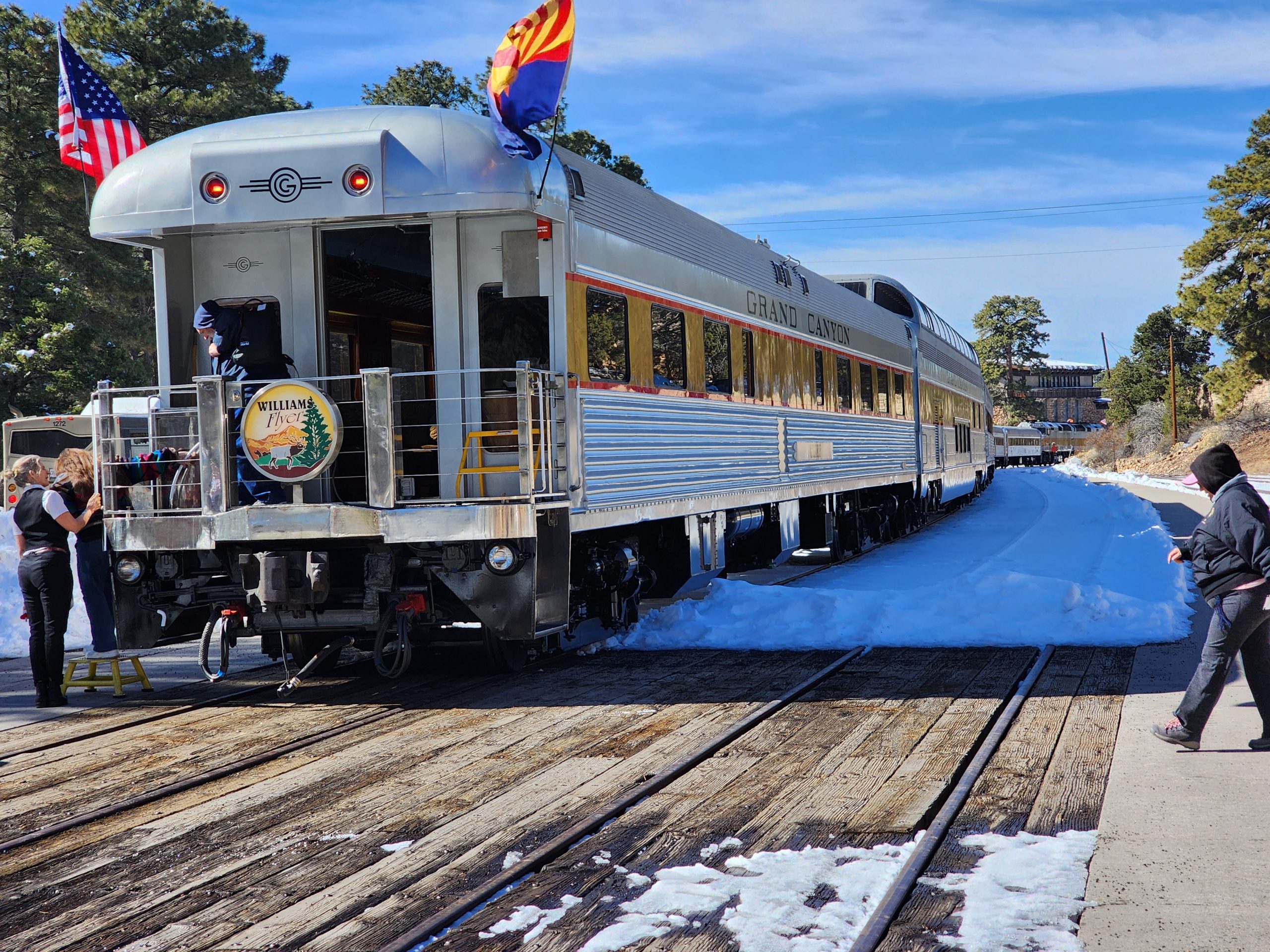
The Grand Canyon Railway‘s vintage trains take over two hours to cover just 64 miles, but riding on the over-century-old railway is an experience you will never forget.
ADVERTISEMENT
Before I continue, I will note that Sheryl and I paid for every single part of this trip, from our tickets in the luxury parlor cars to the Bloody Mary drinks that had me stumbling around a place you really have no business being tipsy in.
A Piece Of American History
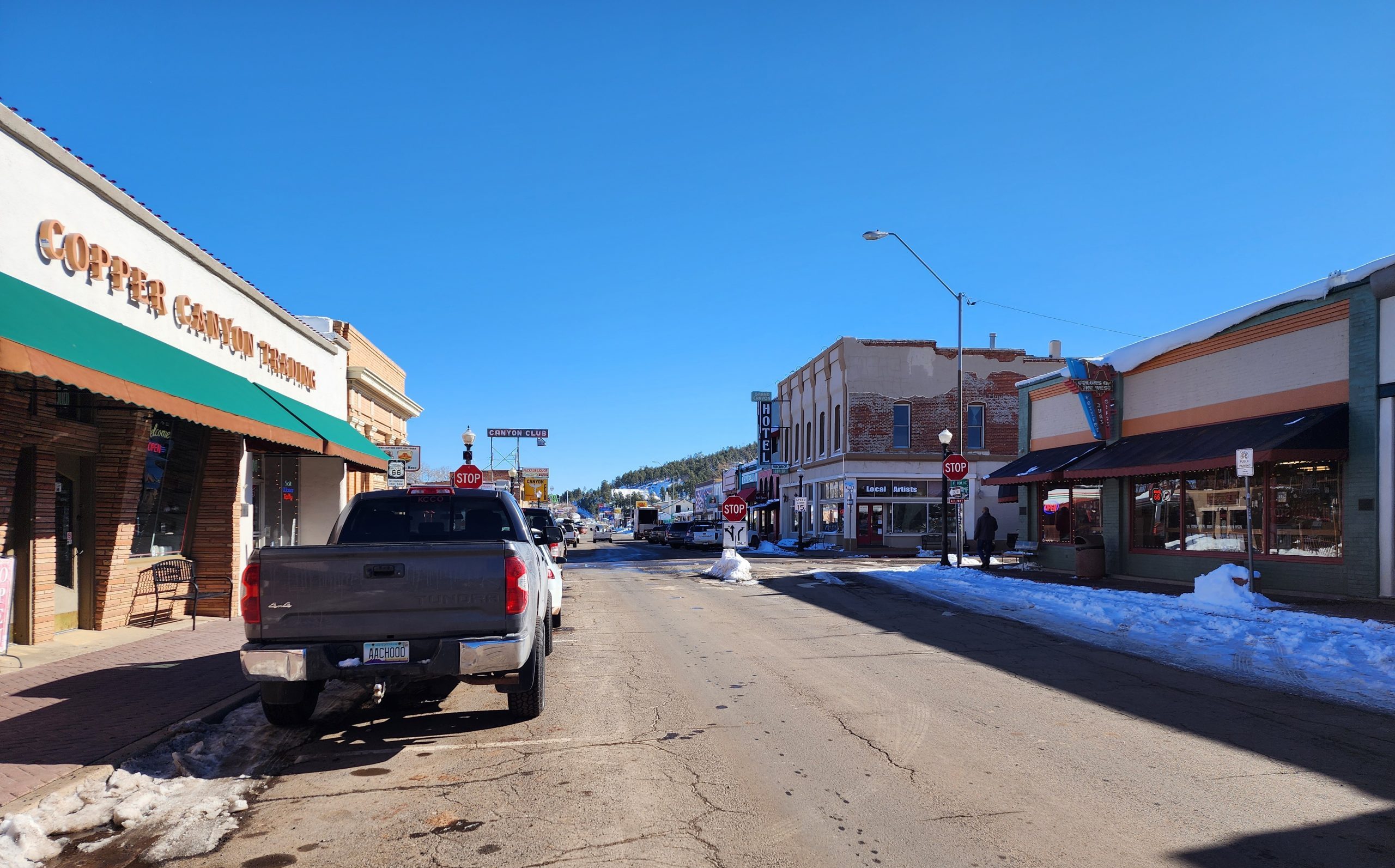
At first glance, the Grand Canyon Railway, which runs 64 miles from Williams, Arizona, to the South Rim of the Grand Canyon, seems like a bit of a tourist trap. Williams itself is a small tourism-centered town that has fully embraced its role as the last locale to be bypassed by the construction of I-40 and the death of Route 66.
However, there’s a lot of fascinating history to learn here.
As signs throughout the Grand Canyon and the National Park Service will tell you, the region and even the inside of the Grand Canyon have been home to Native Americans “since time immemorial.” Today, 11 federally recognized tribes link themselves to the Grand Canyon. When you visit the National Park, you’ll learn that these tribes didn’t just set up their homes at the top of the rim, either, but they lived deep in the canyon, where you might think nobody could survive.
ADVERTISEMENT
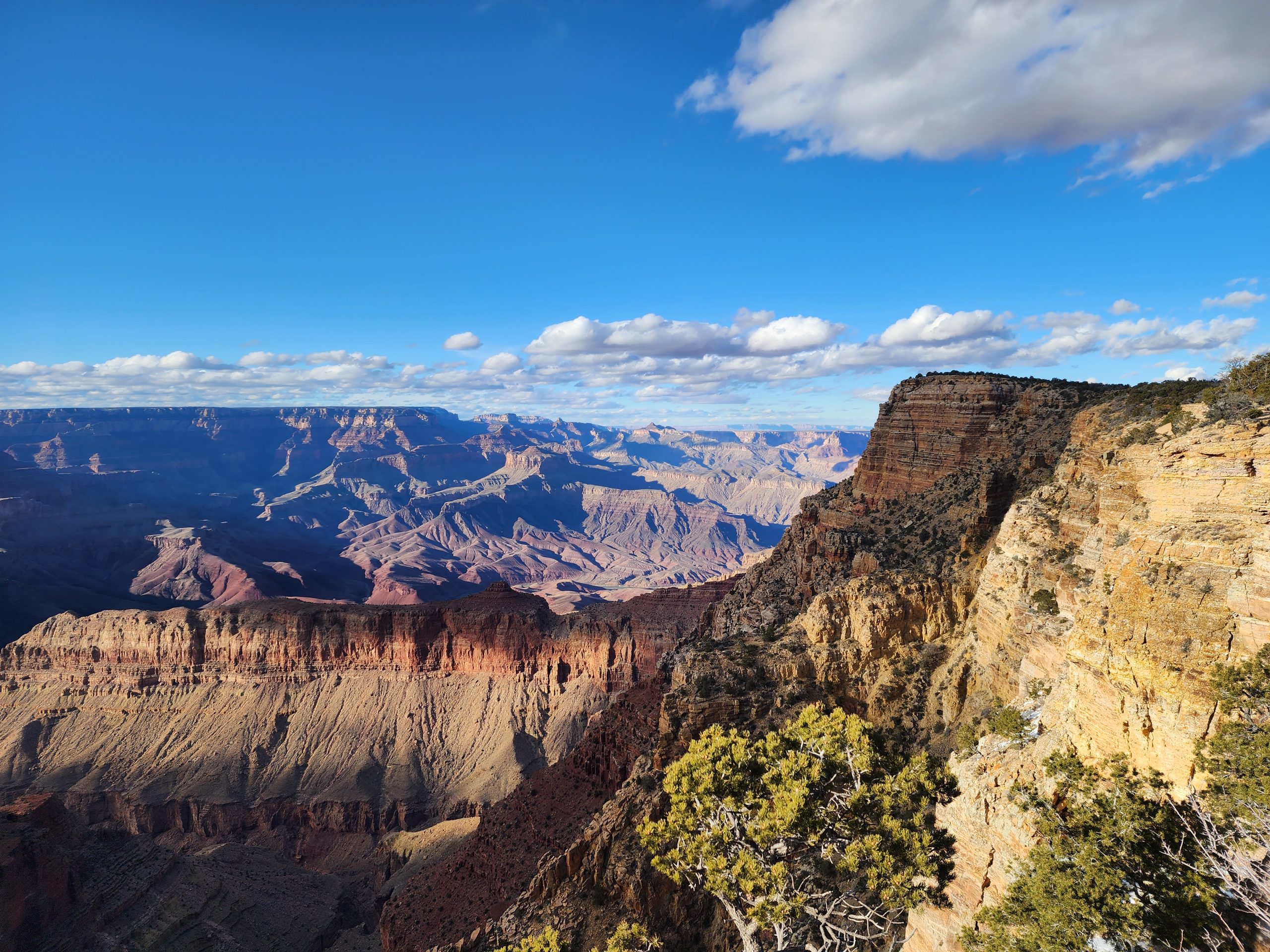
Things began to change in 1540 after expeditions by Spanish conquistador Francisco Vázquez de Coronado led to the first Europeans to spot the Grand Canyon and the Colorado River.
Spanish conquistador García López de Cárdenas was reportedly the first European to see the Grand Canyon. The conquistadors were working on what they heard from Pedro de Tovar, one of the first Europeans to hear of the rumored existence of a so-called “great river” that flowed through the area. Coronado and his army were hoping to find a navigable river that reached the Gulf of California.
Cárdenas would attempt to employ the help of Hopi men to find their way to this river. As the National Park Service writes, the Spanish army wasn’t welcome on the lands of the Natives, and the Hopi led the army on a long and exaggerated path to the highest point over what we know as the Colorado River today.
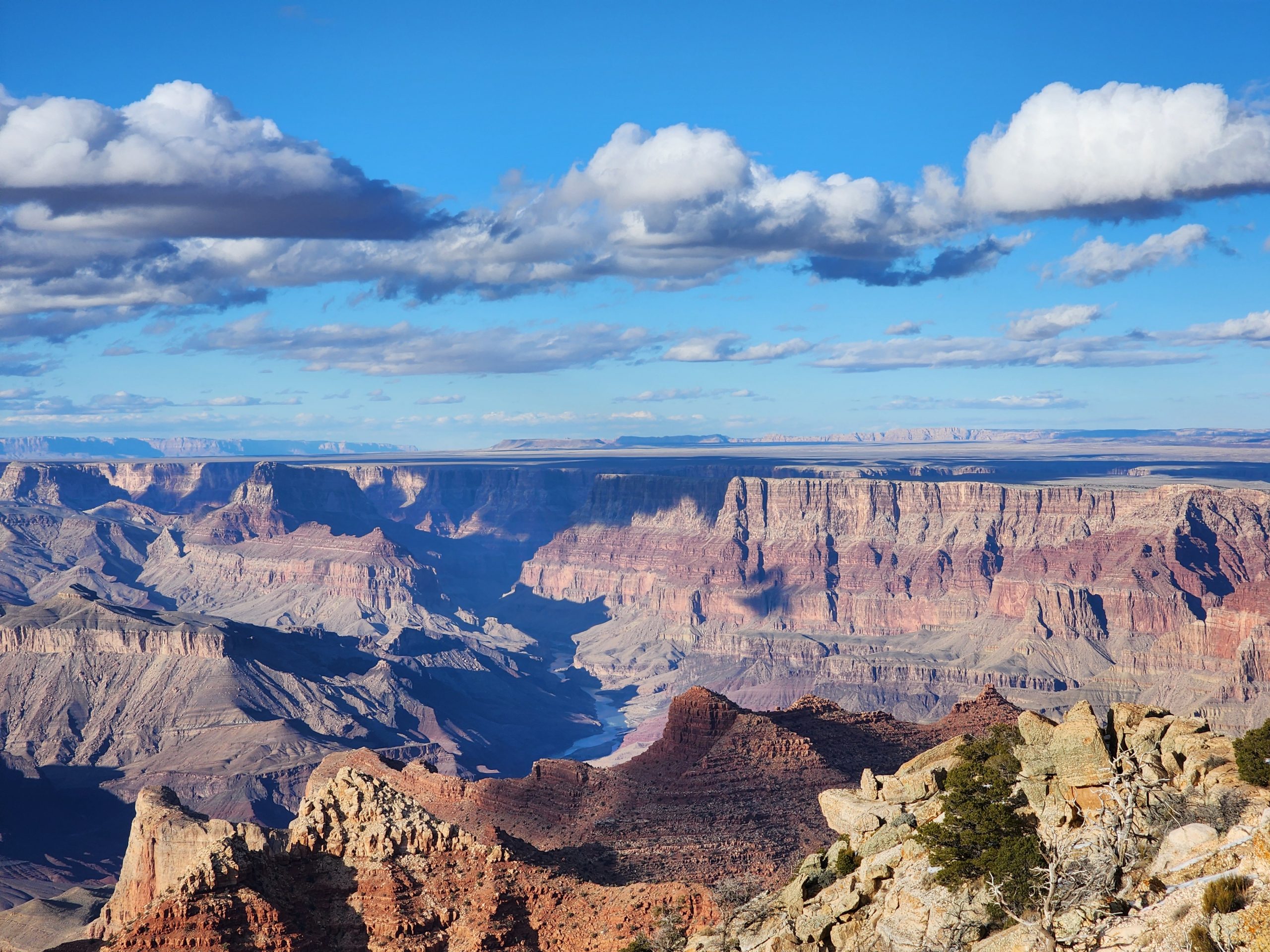
ADVERTISEMENT
After 20 days, the Spaniards reached that highest point, a cliff where the river raged a full mile down below. This didn’t deter the army and Cárdenas sent three men to investigate what they thought was a 6-foot wide river below. The men made it only a third of the way down before figuring out that the river was far wider than estimated. And the waters were far too violent to sail ships down.
The Spaniards attempted to reach the river for three more days before giving up and moving out to Texas, figuring the Grand Canyon was inaccessible. The Hopi achieved their mission of getting rid of the visitors. The Grand Canyon was left alone for another 235 years.
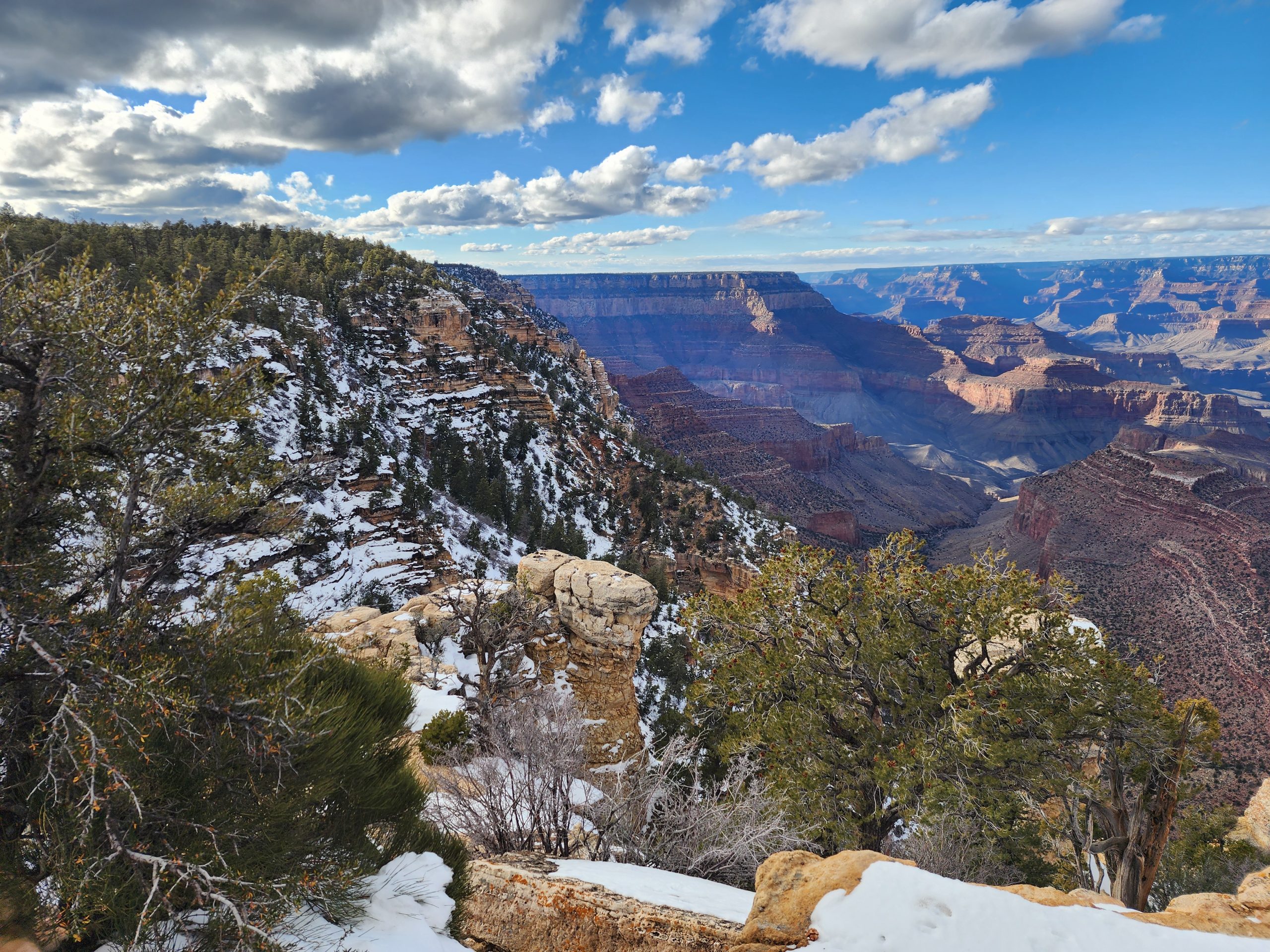
In 1857, much of America’s lands had been charted, but the area of the Grand Canyon was still a blank space on maps. Reportedly, the area was known as the “The Great Unknown.” The United States government wanted to change that and funded an expedition to determine if the area could be used as a trade route. Army First Lieutenant Joseph Christmas Ives of the U.S. Army Corps of Topographical Engineers would become the first European American to reach the river. A decade later, U.S. soldier John Wesley Powell conducted his own expedition.
It wasn’t long before many others descended into the region. Settlers began planting their stakes around the rim in the 1880s. One of them was John Hance, who tried to mine the Grand Canyon, but instead found himself telling stories of western explorers to visitors of the Grand Canyon. Hance was an early pioneer in Grand Canyon tourism. Others attempted to mine the region and also found out there was more value in tourism.
ADVERTISEMENT
The Grand Canyon Railway
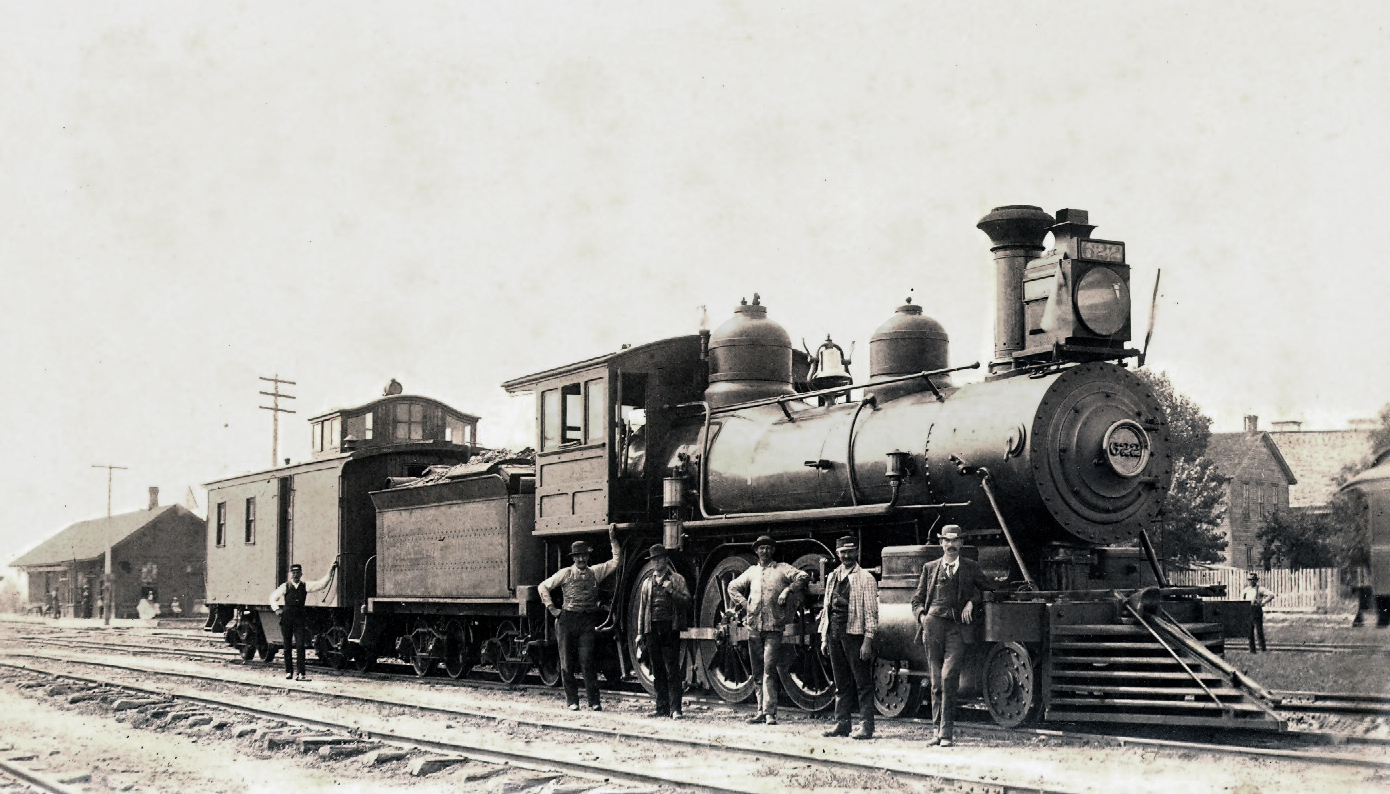
Fast-forward to 1893, and President Benjamin Harrison gives the Grand Canyon forest preserve status. In those early days of Grand Canyon tourism, trains would bring tourists in from as far west as Chicago to the nearest train depot in Williams, Arizona. It should be noted that at this time, Arizona was still a Territory. Continuing on here, the tourists boarded a stagecoach for a bumpy and lengthy ride to the South Rim of the Grand Canyon.
At first, building a train line to the Grand Canyon wasn’t strictly about tourism. William Owen “Buckey” O’Neill, the sheriff of Yavapi County and later mayor of Prescott, thought there was money to be made from mining gold. O’Neill found an investor and sought to convince the Atchison, Topeka & Santa Fe Railway to build a spur to the mines north of Williams. However, he also tried to sweeten the deal with the railroad by talking about tourism opportunities.
Development began in 1897 under the Santa Fe and Grand Canyon Railroad Company, but O’Neill would not live to see its completion. He would die a year later in the Spanish-American War. The Atchison, Topeka & Santa Fe Railway took over the project and in 1901, the new track was completed. The first train passengers arrived at the Grand Canyon in September of that year and sure enough, the Atchison, Topeka & Santa Fe discovered that there was far more money to be made in tourism than freight.
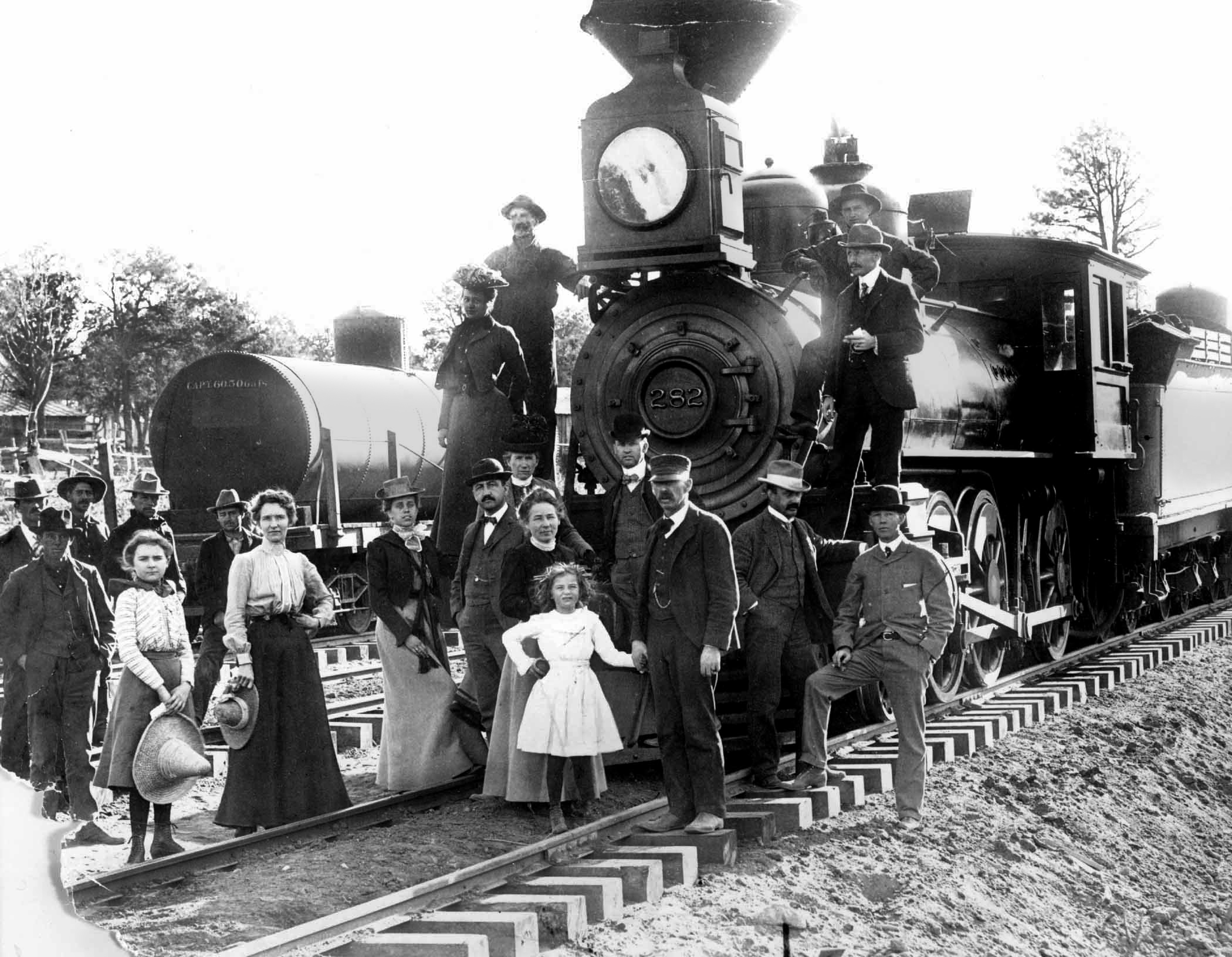
Since then, the Grand Canyon Railway has provided an important service. Stagecoach rides took eight hours for $15. The train did it in a fraction of the time for $3.95. Of course, it wasn’t enough that there was just a train to the Grand Canyon, the infrastructure of the area had to be built up, too. From the Grand Canyon Railway:
[N]otable passengers to ride the Grand Canyon Railway include Theodore Roosevelt, John Muir, William Howard Taft, Franklin Delano Roosevelt, Dwight D. Eisenhower, Clark Gable, Jimmy Durante, Doris Day, Warren Buffet, and Bill Gates.
Over the years, the Santa Fe also built many of the structures that now grace the South Rim. After all, if they were going to start bringing people in large numbers, they had to have a way to accommodate and feed them. When the train first arrived in 1901, tent camps were found along the rim. The Santa Fe approached the development with engineering skills and technology of the times that made a wonderful contribution still evident today. In 1904, the railroad hired the Fred Harvey Company to manage the hotels and restaurants at the Grand Canyon for the Santa Fe, and in 1905, Santa Fe built its flagship hotel, the El Tovar, which became the finest lodging at the rim and arguably in the Southwest at the time.
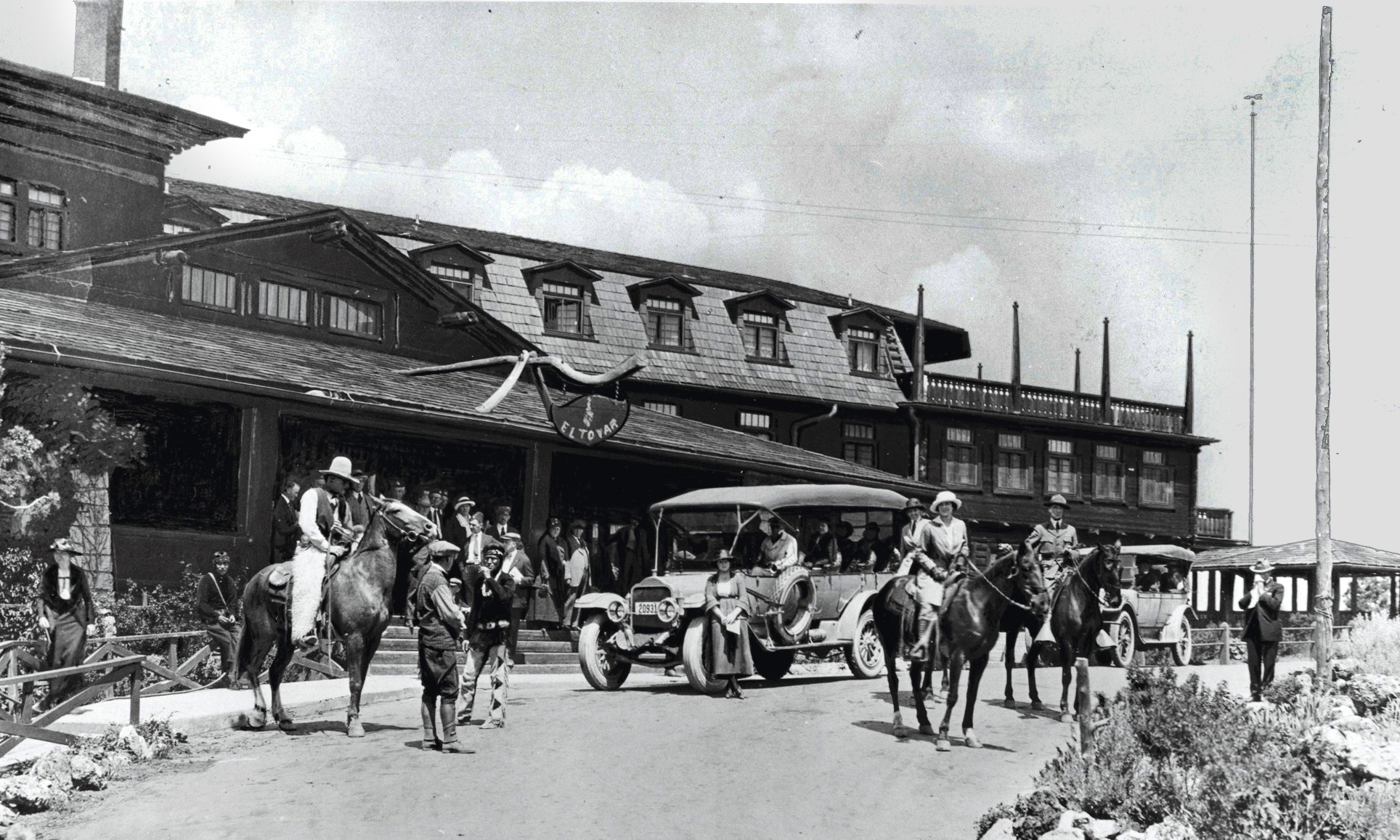
The railroad, in a most progressive move for the times, hired Mary Elizabeth Jane Colter, a woman, to design many of the buildings that have become part of the signature of Grand Canyon National Park. Her distinctive touch stamped an indelible imprint in the building at the Grand Canyon with her version of a natural style of Pueblo Indian architecture. Colter is responsible for such landmarks as the Hopi House, Lookout Studio, Bright Angel Lodge, Desert View Watchtower, and Hermit’s Rest.
The Grand Canyon Railway continues that eventually, the railway became more than just a tourist link. Until 1926, all water to the Grand Canyon Village was delivered by train. Ranchers and loggers in the region also used the railway for their businesses.
ADVERTISEMENT
Unfortunately, the Grand Canyon Railway wouldn’t last. While the train solved the problem with slow, expensive, and bumpy stagecoach rides, a developing technology would make the train obsolete. As the years rolled on, improved roads reached the Grand Canyon and cars became the vehicle of choice for tourists. As Route 66 lost to the Interstate Highway System, the Grand Canyon Railway steadily lost riders to cars. By 1968, the Santa Fe decided to pull the plug. The last passenger train to the Grand Canyon carried just three tourists. Freight service ended in 1974.
Several attempts were made to save the Grand Canyon Railway, but all of them failed. By 1988, even the Williams depot was abandoned. The railway’s fortunes finally changed in 1989 when private investors Max and Thelma Bigert purchased the line, the Fray Marcos Hotel in Williams, the Williams depot, and dormant rail equipment. The pair then began redevelopment of the aforementioned facilities and equipment. The new Grand Canyon Railway opened on September 17, 1989, 88 years to the day since the railway’s first run in 1901.
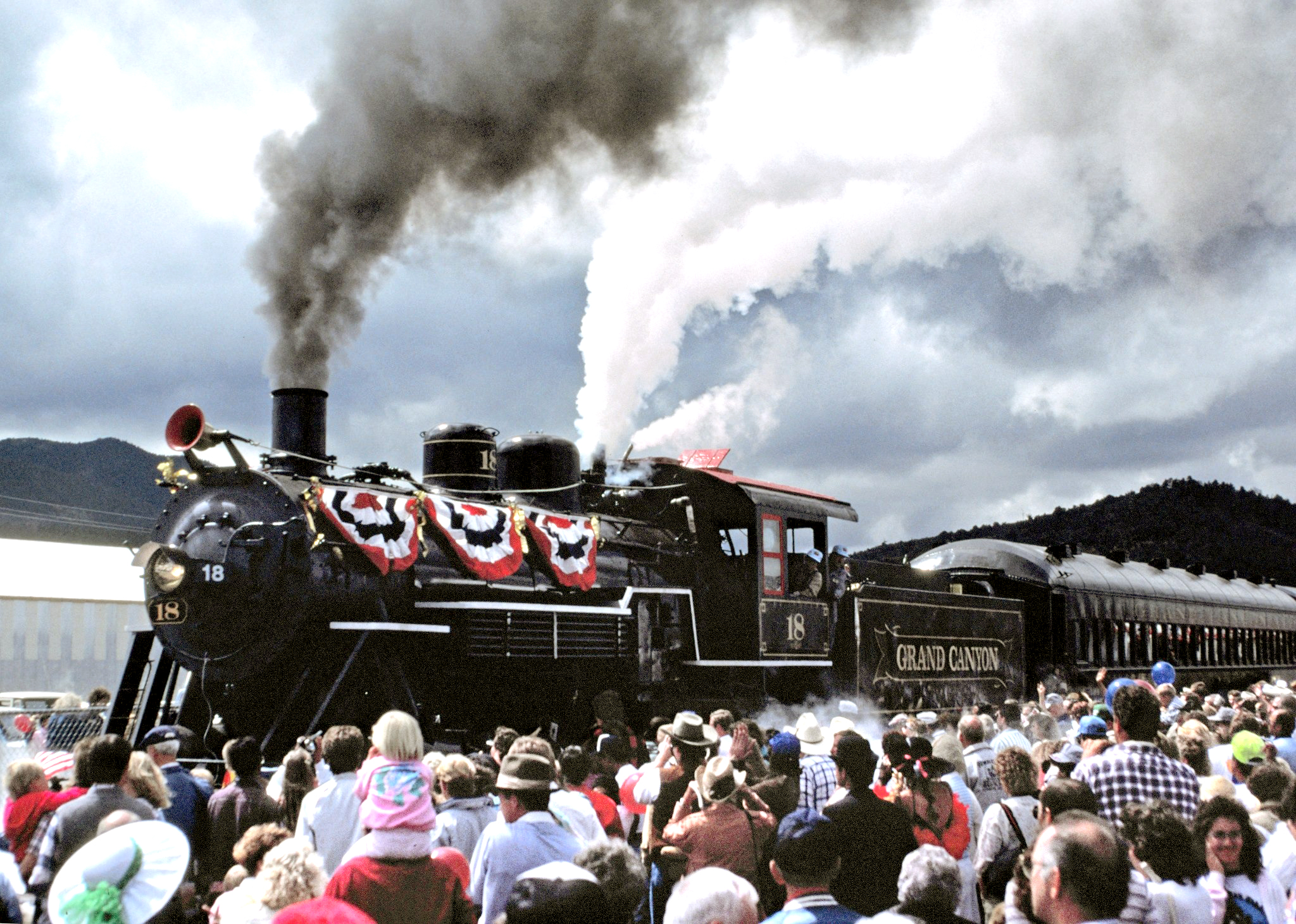
Since then, the Grand Canyon Railway has collected vintage locomotives, purchased vintage passenger cars, and overhauled the whole operation. Along with a new hotel in Williams, the Grand Canyon Railway acquired two steam locomotives and restored them both, each taking over 8,000 working hours and over $1,000,000 to restore.
The Bigerts sold the enterprise in 2006 to the Xanterra Travel Collection, which operates the railway and the hotel today. The Grand Canyon Railway runs regular trains to and from the Grand Canyon and claims to remove 50,000 cars a year from Grand Canyon South Rim’s traffic.
Steam trains also remain in operation once and sometimes twice a month between spring and fall. Why so infrequent? The railway notes that its steam locomotives consume 12,000 gallons of water and 1,200 gallons of fuel a day while the diesel-electric locomotives drink half of the fuel and no water. To save on operating costs, the railway’s steam locomotives are often paired with a diesel-electric locomotive. Another measure has included converting one of the steam locomotives to burn waste vegetable oil from Williams and Grand Canyon Village restaurants.
ADVERTISEMENT
Our Journey
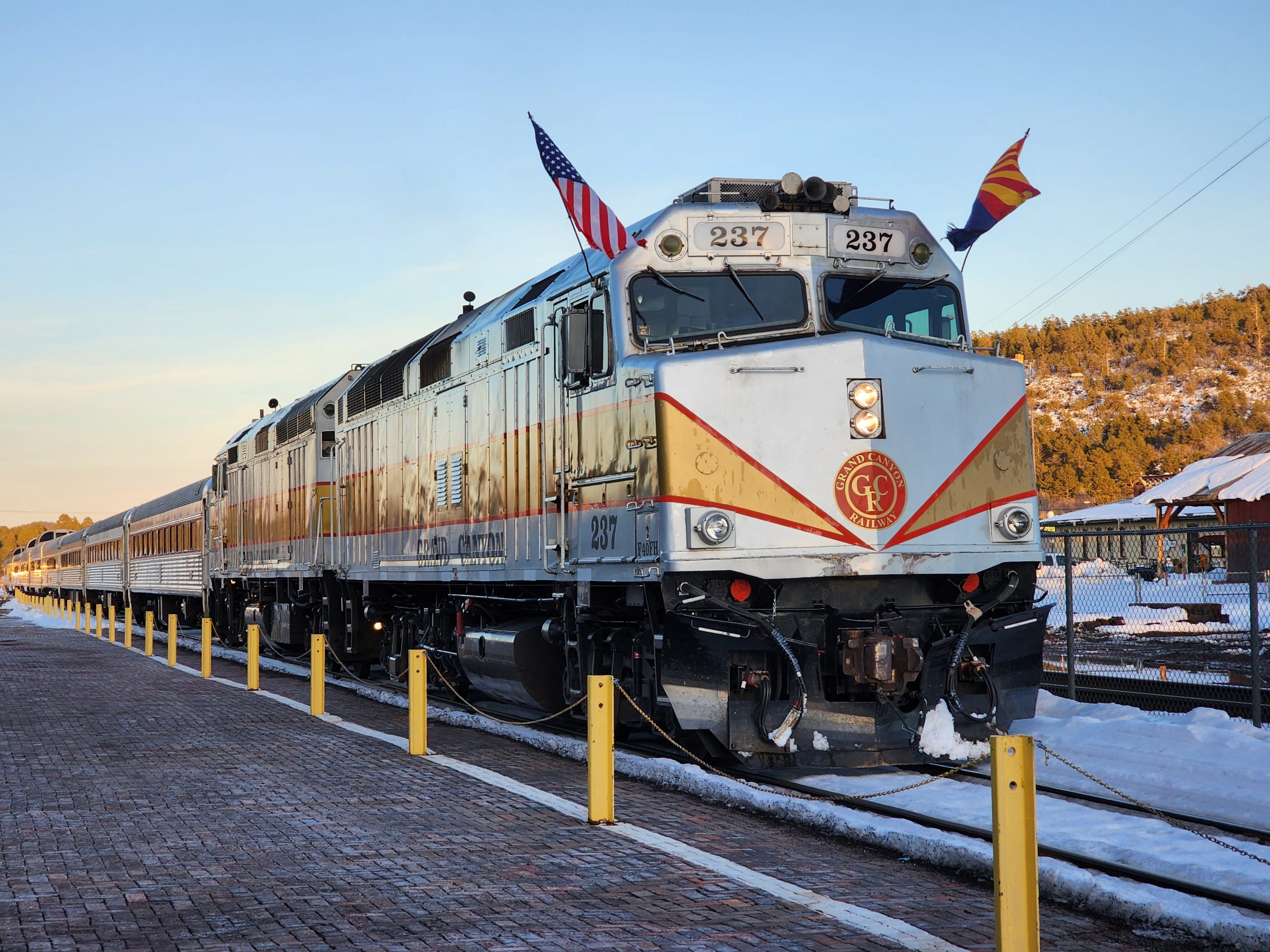
Last week, Sheryl and I embarked on a journey of a lifetime. While our train would not be headed by a historic steam locomotive, it was powered by two EMD F40PH locomotives painted in a glorious silver, red, and gold paint scheme. The leading unit, No. 237, was built in 1977, while the other, No. 239, was built in 1979. Both locomotives served Amtrak until the 1990s. The Grand Canyon Railway picked up the units, had them refurbished, and put them into service in 2004.
The Grand Canyon Railway’s F40PH locomotives have been regeared for higher torque and bear the designation F40FH. Both locomotives have an EMD 16-645E3 169.6-liter V16 prime mover good for 3,000 HP. These locomotives have more than enough firepower for an excursion train, but for a lot of the two-hour, 15-minute ride to the South Rim, the train is cruising between 25 and 40 mph. The situation does change toward the end of the ride as the locomotives need to pull the train up a 3 percent grade. Then, you get to witness a diesel smoke show of force.
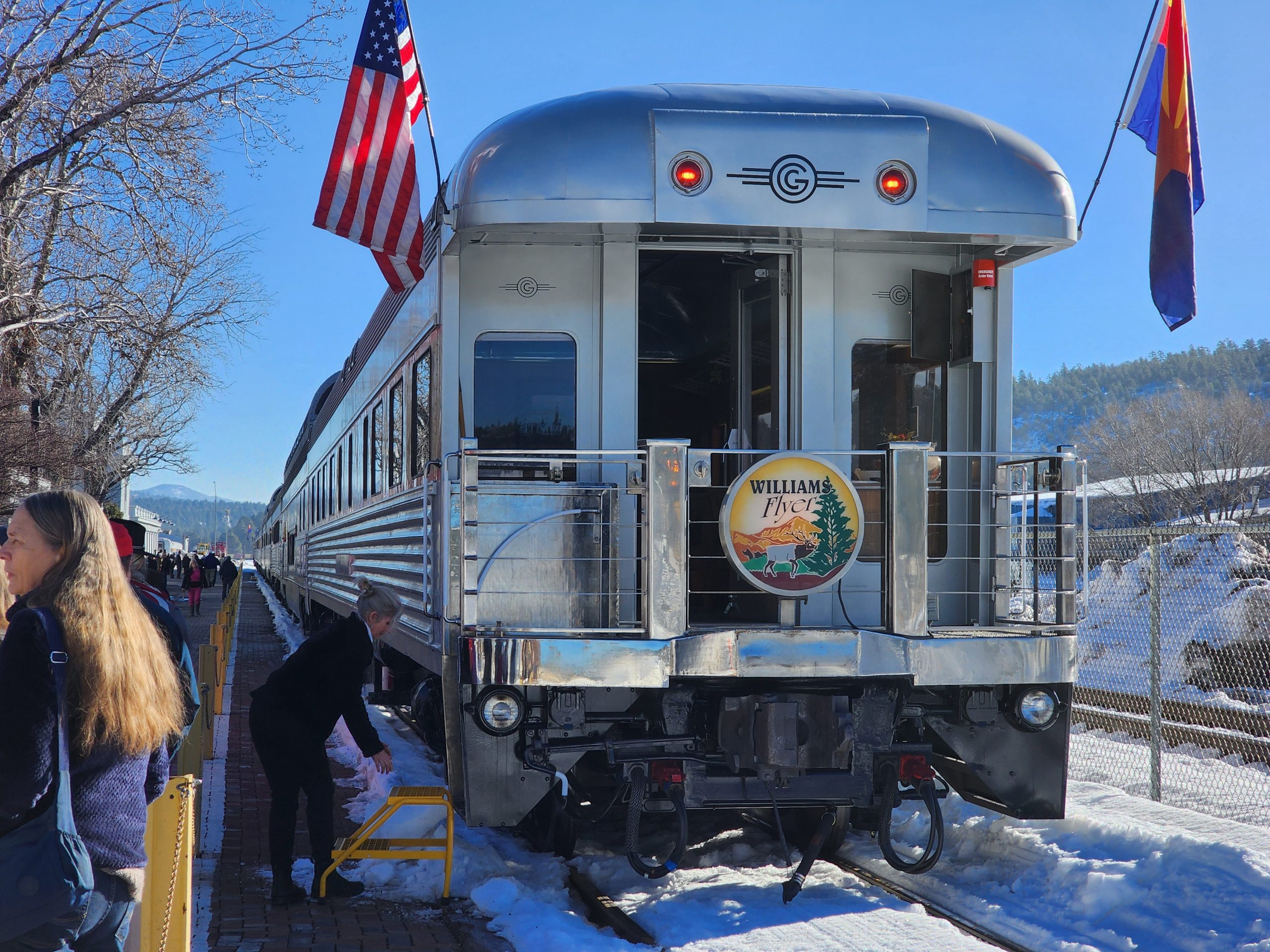
The Grand Canyon Railway’s train was a bit longer than usual for the extra traffic brought in by Valentine’s Day. Each train is set up in classes and everyone gets to sit in some sort of historic railcar. Riders have their choice of Harriman-Style Pullman cars from the 1920s, Budd Rail Diesel Cars from the 1950s converted into unpowered coaches, Budd cafe cars from the 1950s, a variety of vintage first-class cars, dome cars, and finally, just a few parlor cars.
ADVERTISEMENT
For the ride to the South Rim of the Grand Canyon, Sheryl booked us tickets aboard the Grand Canyon Railway’s Chief parlor car. I’ll let the railway tell you its history:
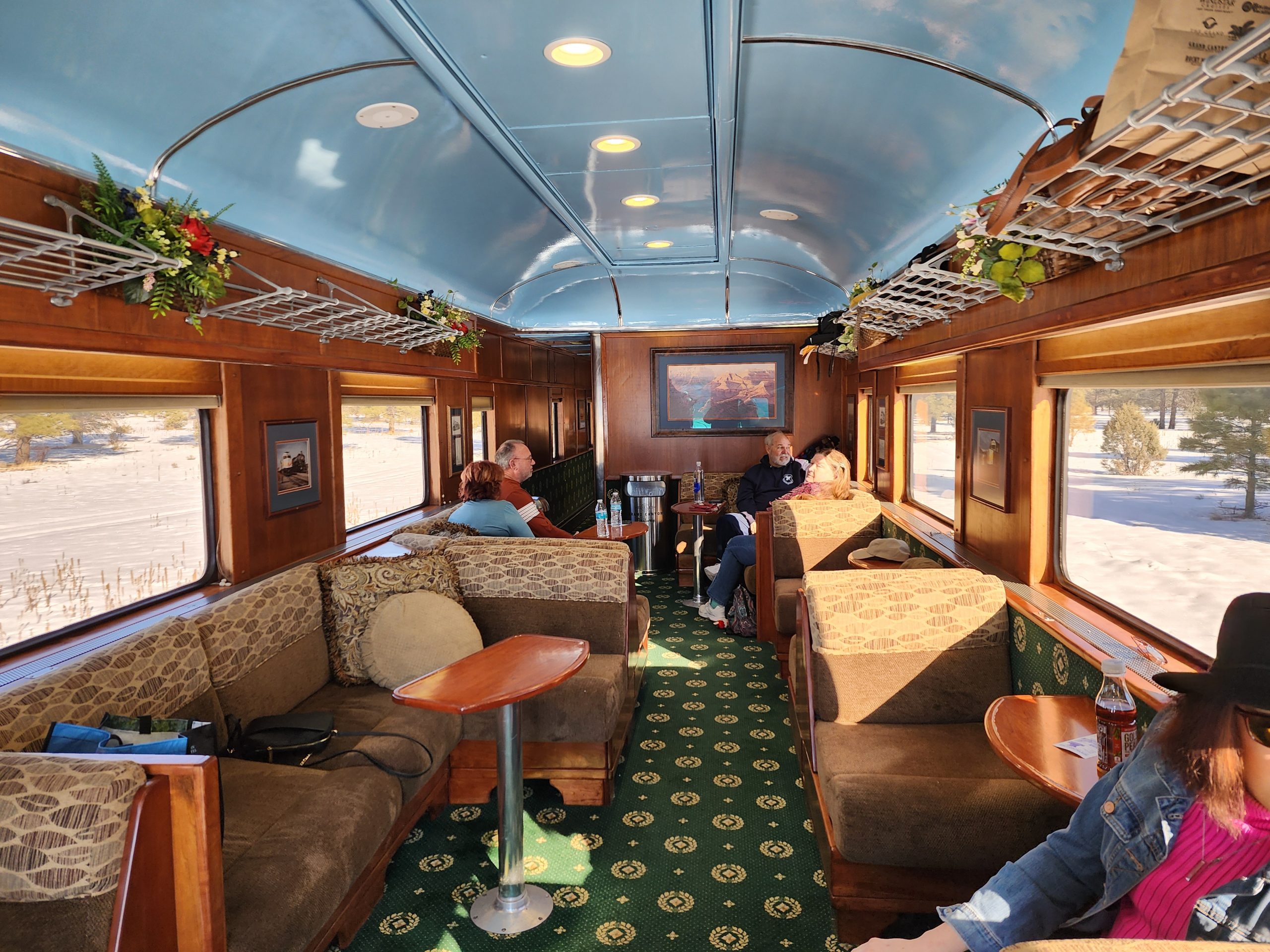
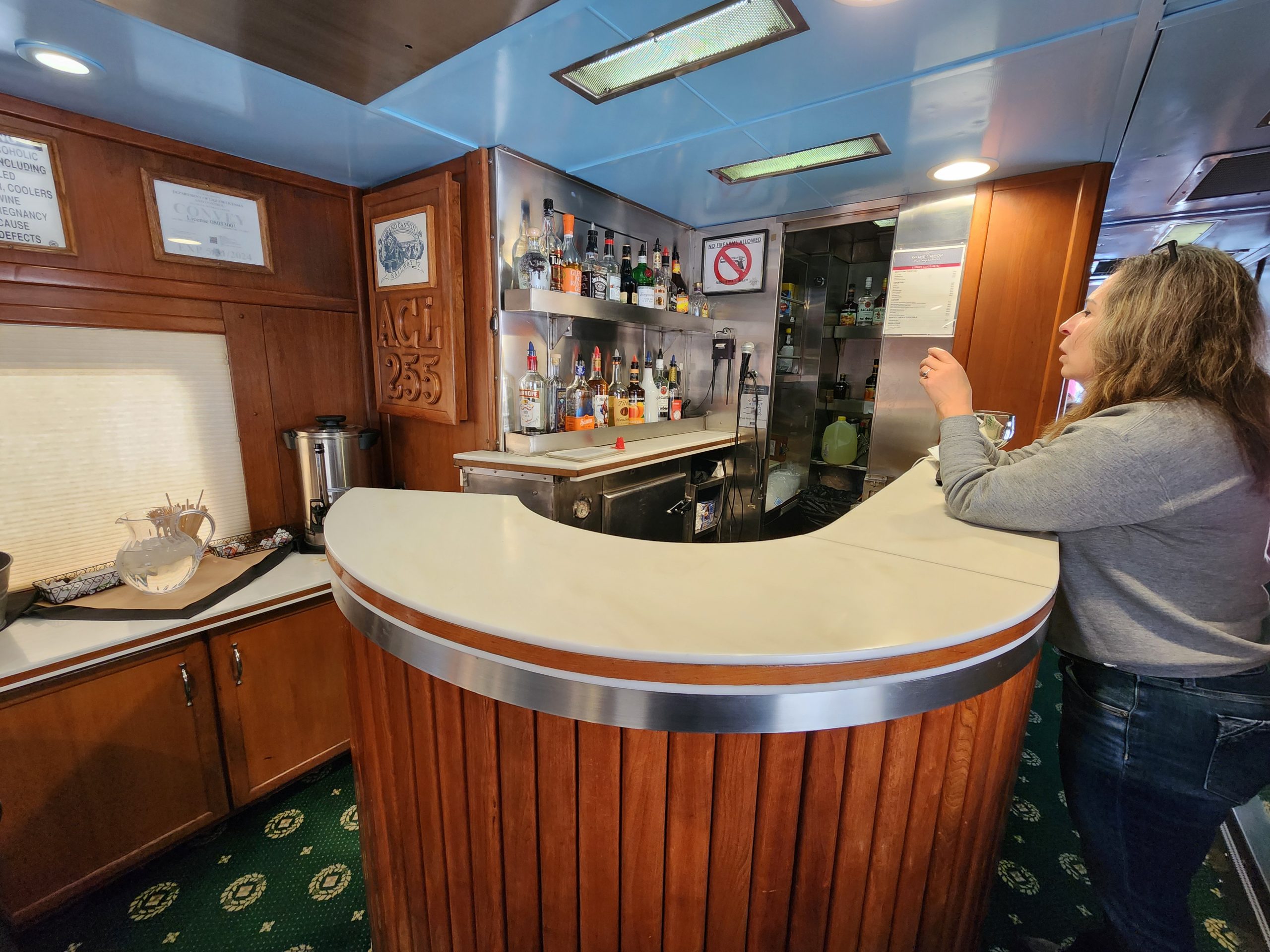
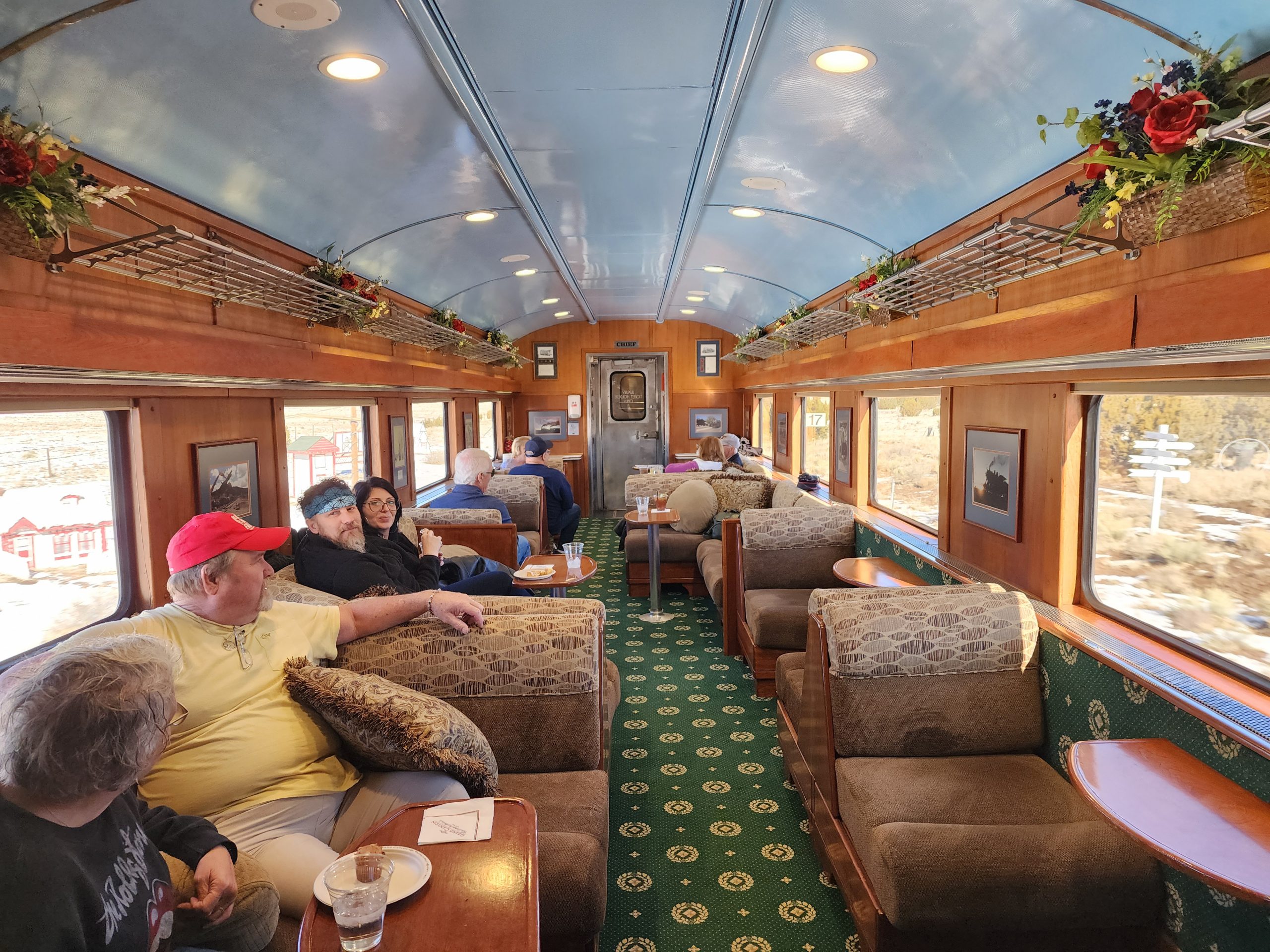
The Chief was built in 1947 for use on the Atlantic Coast, in service between New York and Miami. It was retired in the early 1980s and sat in storage until it was purchased by a private investor where it was moved to San Antonio and after being refurbished for $250,000, was put into service for the Texas Southern Dinner Train from 1989-1991. After 1991, it served as a dinner car for charter in Mexico until 1993 when it was seized by the Mexican government. After a protracted legal battle the car was returned in 1994 to the US-Mexico border where it was picked up by the Union Pacific for delivery to San Antonio, but the car was lost en route and found later that year in New Orleans. The car was subsequently damaged in a rear end collision on its return to San Antonio and the owner put it into storage before selling it in 1999. The next owner added the observation platform at a cost of $95,000 to cover up the damage caused in the collision, but decided to sell the car prior to completing the restoration. GCR acquired the car in 2002 and put it into service in October of that year as the Chief. It is 76 feet long, carries 37 passengers, and features an open air rear platform.
If you’re curious, and I know you are, here’s what the Chief looked like before restoration:
ADVERTISEMENT
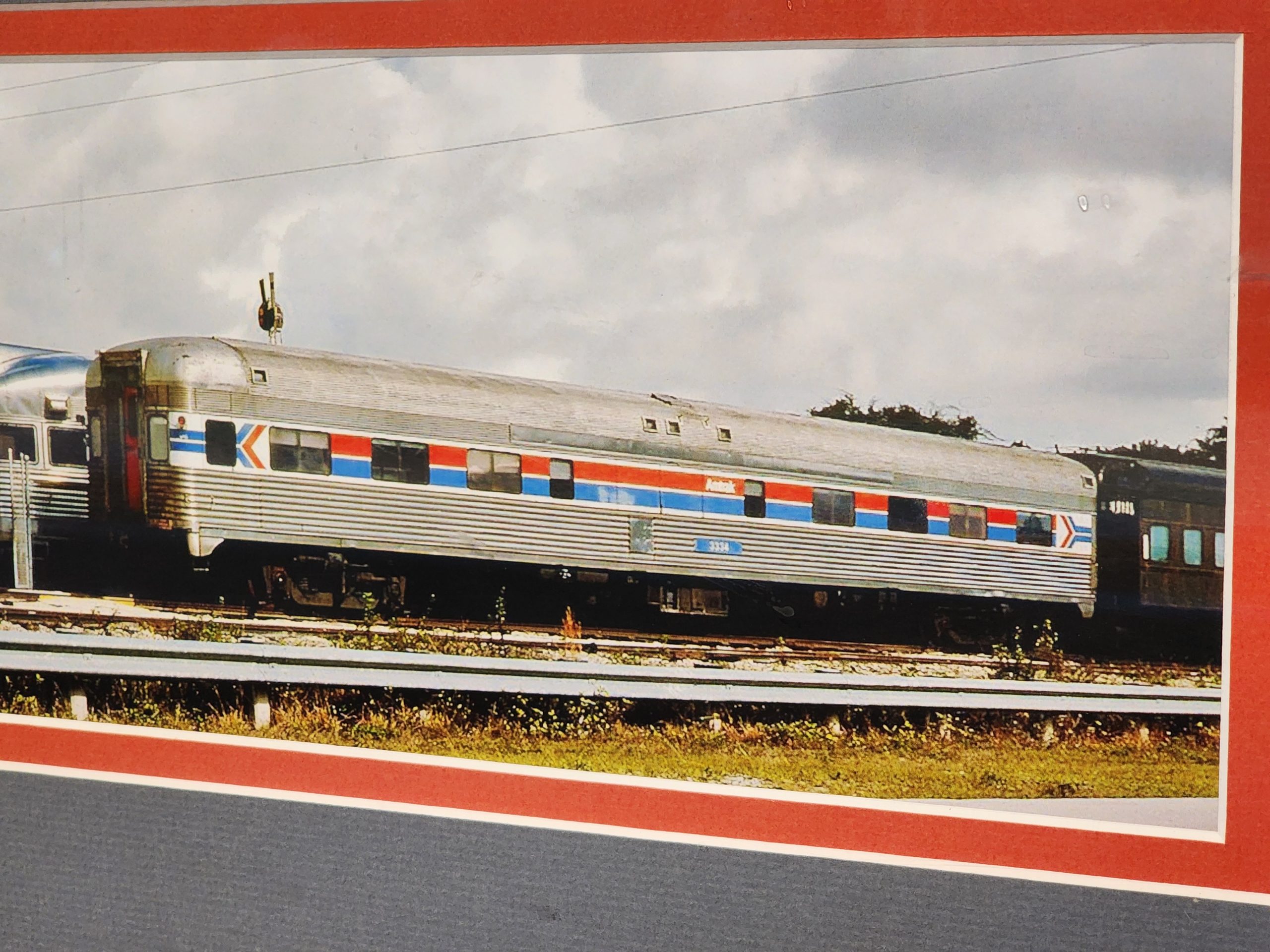
A ride aboard the GCR’s Chief was an experience unrivaled by any other form of travel. Sure, I’ve ridden in the Illinois Railway Museum’s parlor cars before, but there’s a huge difference between a handful of minutes on a museum’s demonstration track and a car that’s fully operational and whisking you away to an actual destination.
Our train left the Williams depot at 9:30 am. As Sheryl and I sat in our plushy seats, we watched the world pass through large windows. Surrounding us was soft carpet, beautiful wood, an observation deck, and all of the drinks we could consume. Riding a commuter train can sometimes feel like torture. This? It felt like gliding to our destination in the lap of luxury. Sure, driving to the Grand Canyon would have taken half of the time and a fraction of the money. But driving wasn’t going to produce views like these:
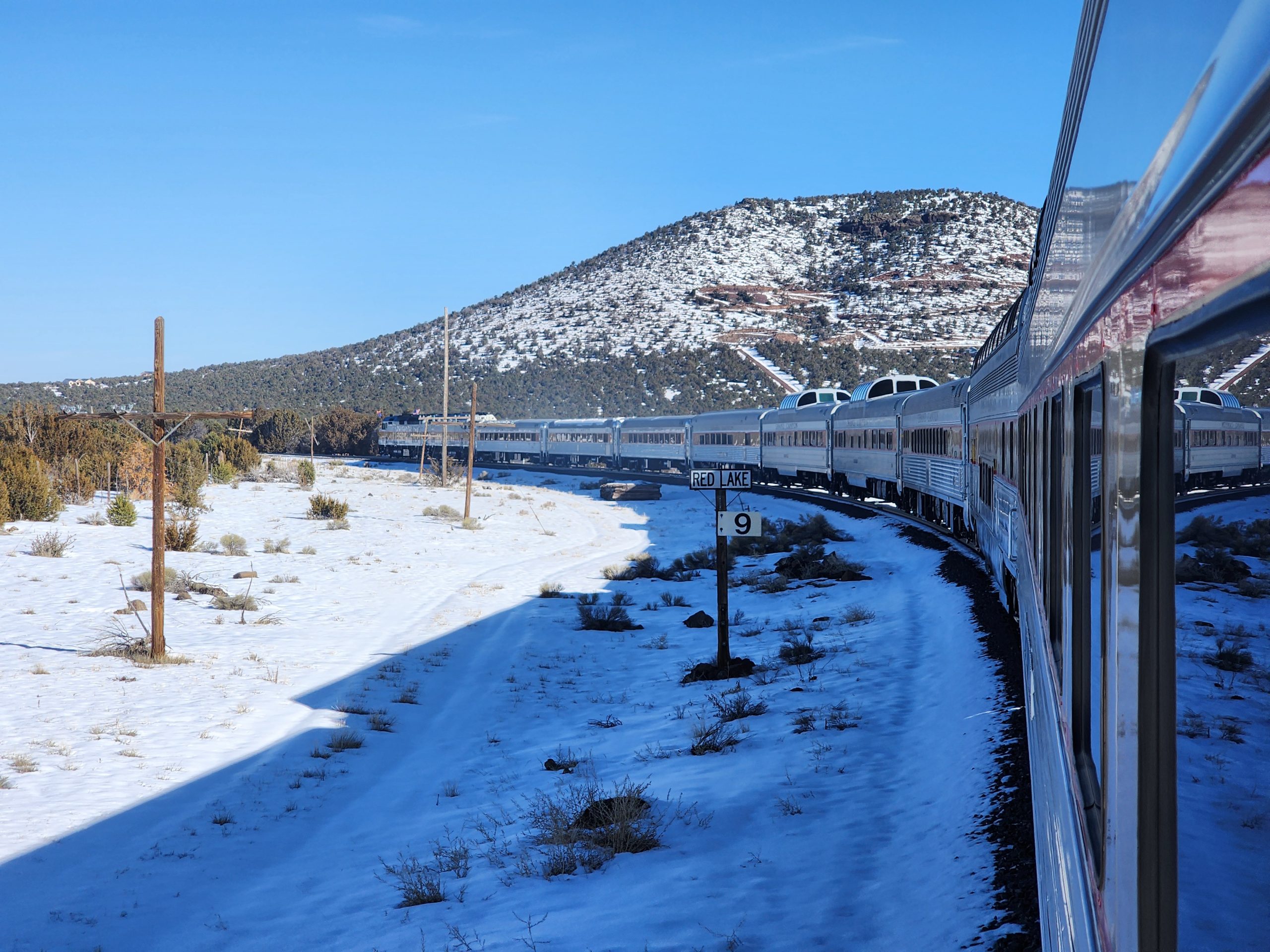
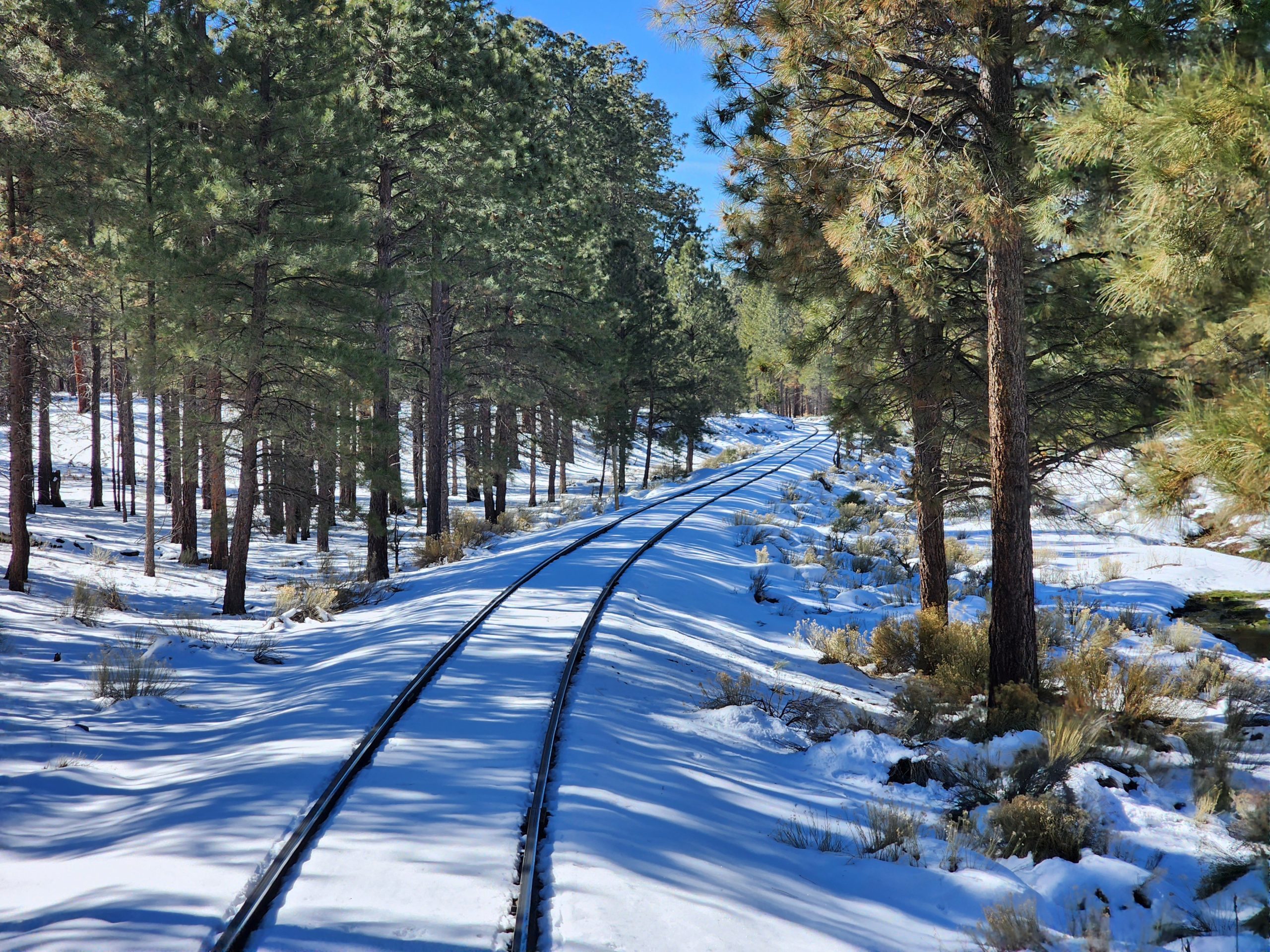
ADVERTISEMENT
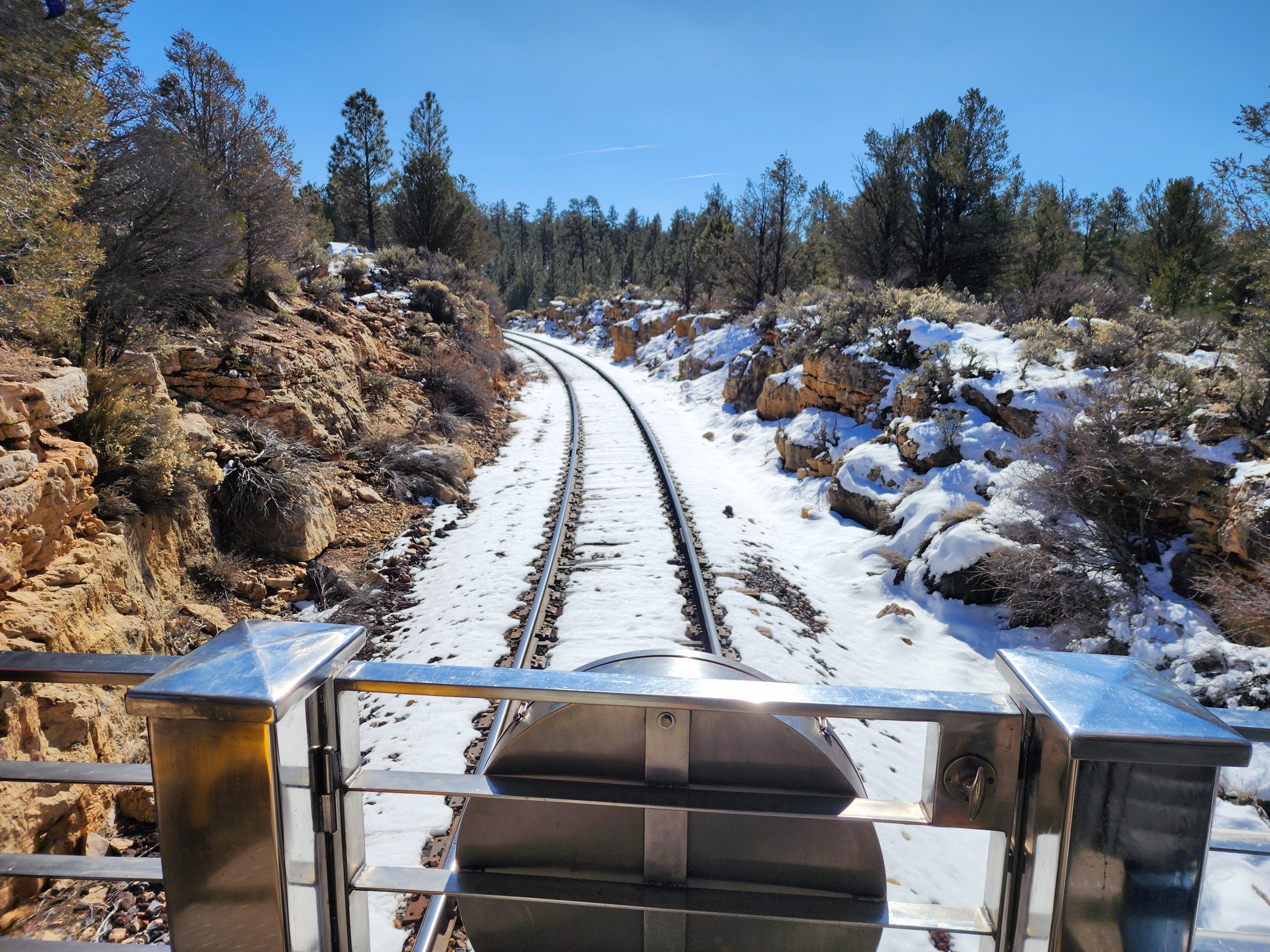
I spent a lot of time on the observation deck of the Chief, listening to the rhythmic clickety-clack of the wheels down the track, getting the occasional whiff of diesel from the mighty locomotives, and witnessing the breathtaking lands of Arizona slowly roll by. As the train made progress, snow-covered forest broke into desert, which eventually turned back into a forest again as the train began its climb toward the Grand Canyon.
The Grand Canyon Railway markets the experience of riding in the Chief to, at least briefly, being something of a rail baron. You know what? I definitely felt like a rail baroness. For those two and a quarter hours, I felt like a queen, enjoying a calming, lavish environment and honestly good company along the way. There was little I enjoyed more than holding my love’s hand and watching the world slowly roll by, the sights, smells, and feel of the rails leaving imprints on our memories. It was just us, a gleaming vintage train, and the romance of the rails. Ok, there may have been a few Bloody Mary drinks somewhere in there, too.
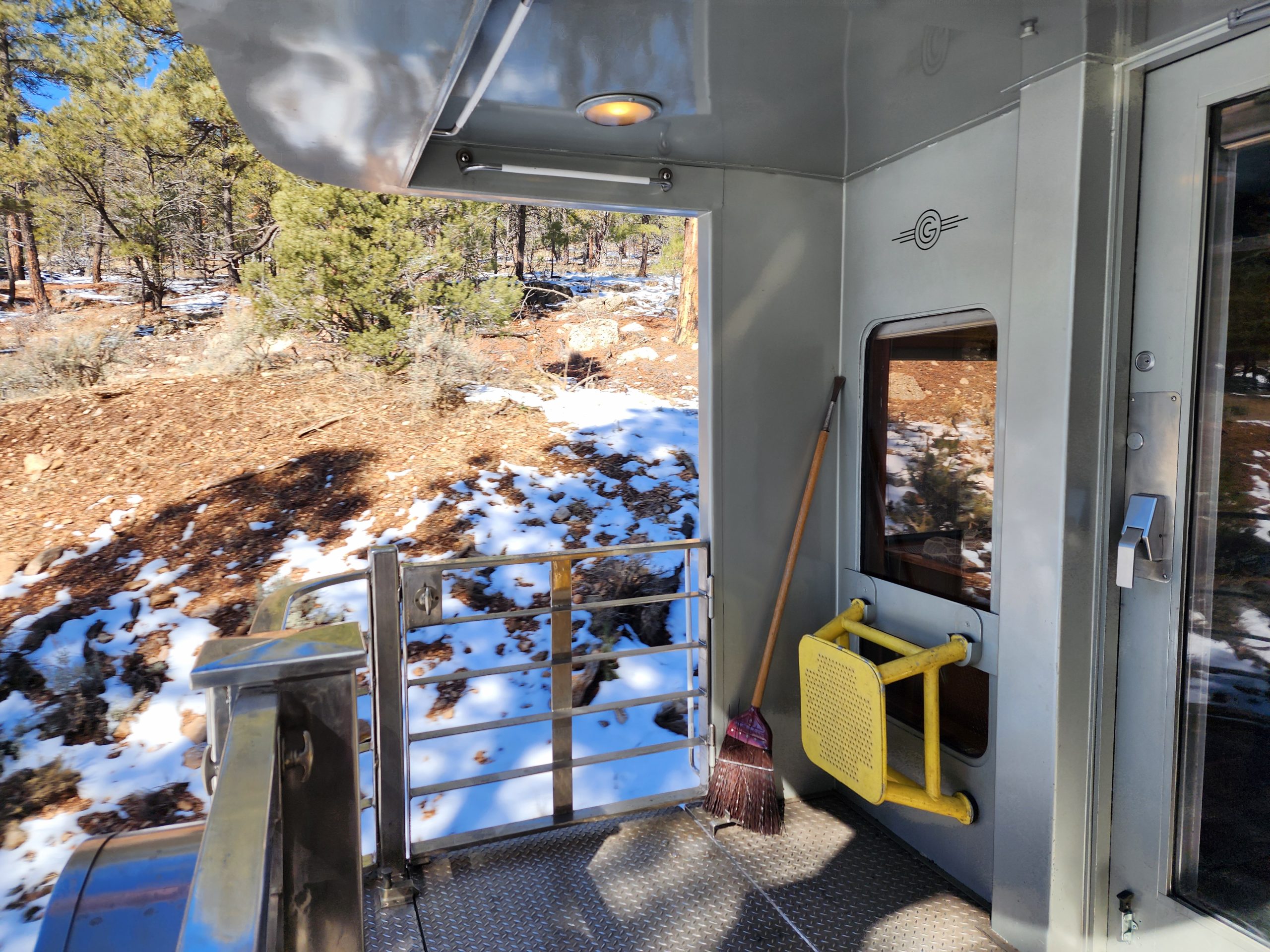
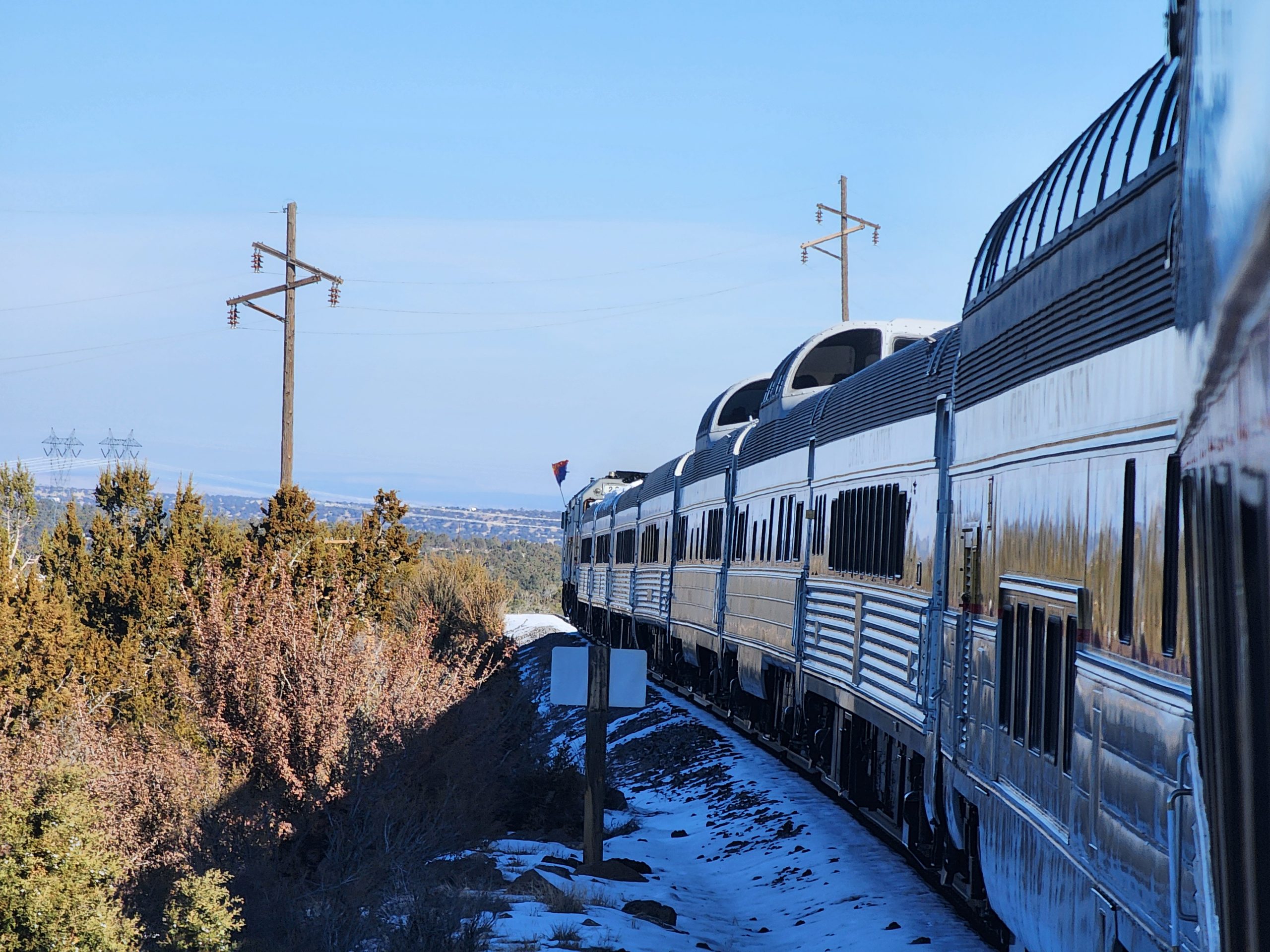
ADVERTISEMENT
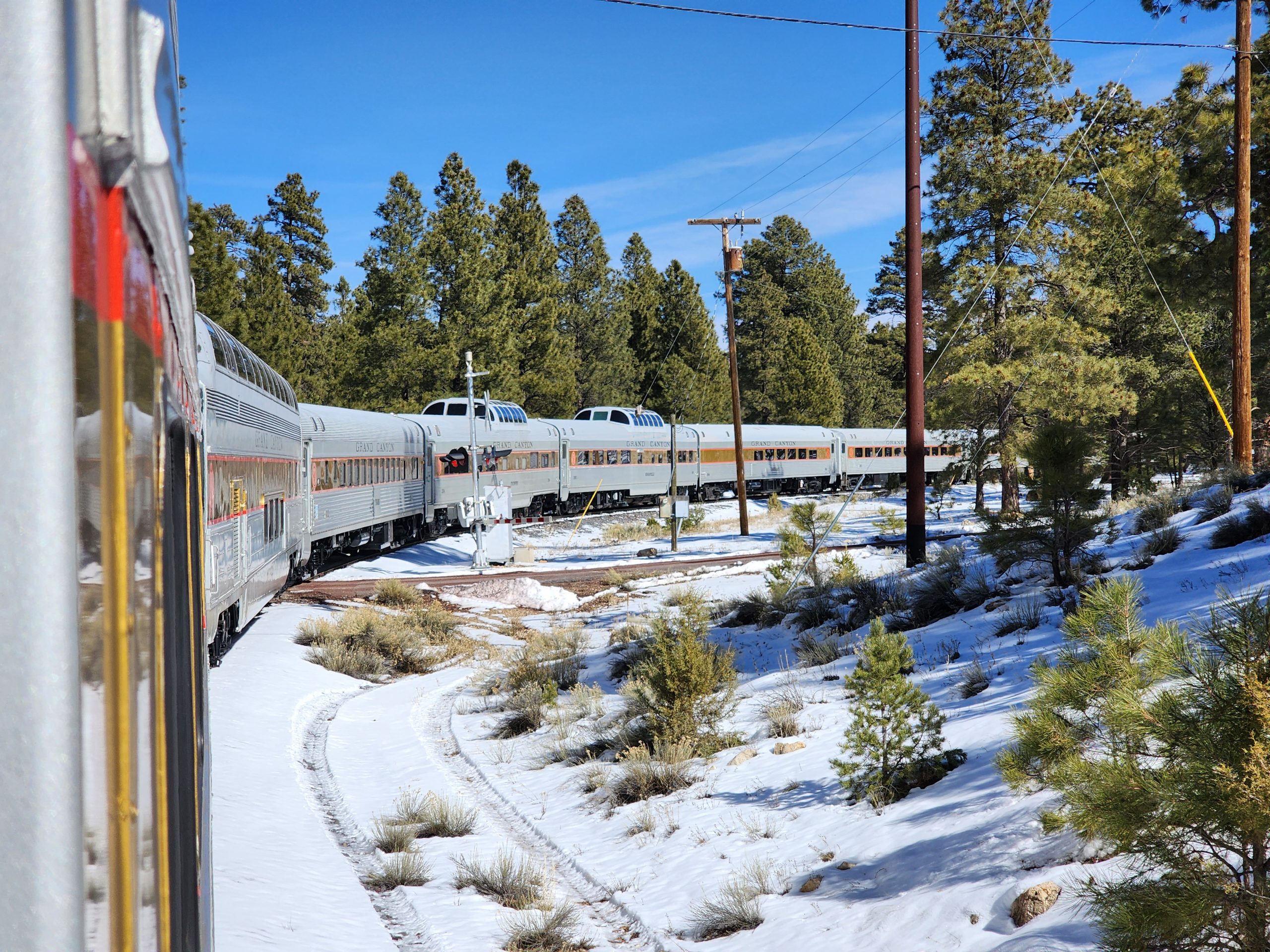
Just before noon, our train finished its 64-mile run to the depot at the Grand Canyon Village. The Grand Canyon Railway says this is one of just 14 log depots known to have been constructed in the United States, just one of three log depots to have survived, and the only log depot still in operation in the United States.
After departing the train, Sheryl and I embarked on a 3.5-mile hike along the South Rim of the Grand Canyon. Now, this article really isn’t about the Grand Canyon itself, but I will say this, if you’ve never been, you really need to go. Pictures simply do not do the Grand Canyon justice. If your experience is like mine, you will just stand at a cliff’s edge literally speechless as your brain attempts to compute what your eyes are seeing. Do it, you will not regret a single moment or dollar spent.
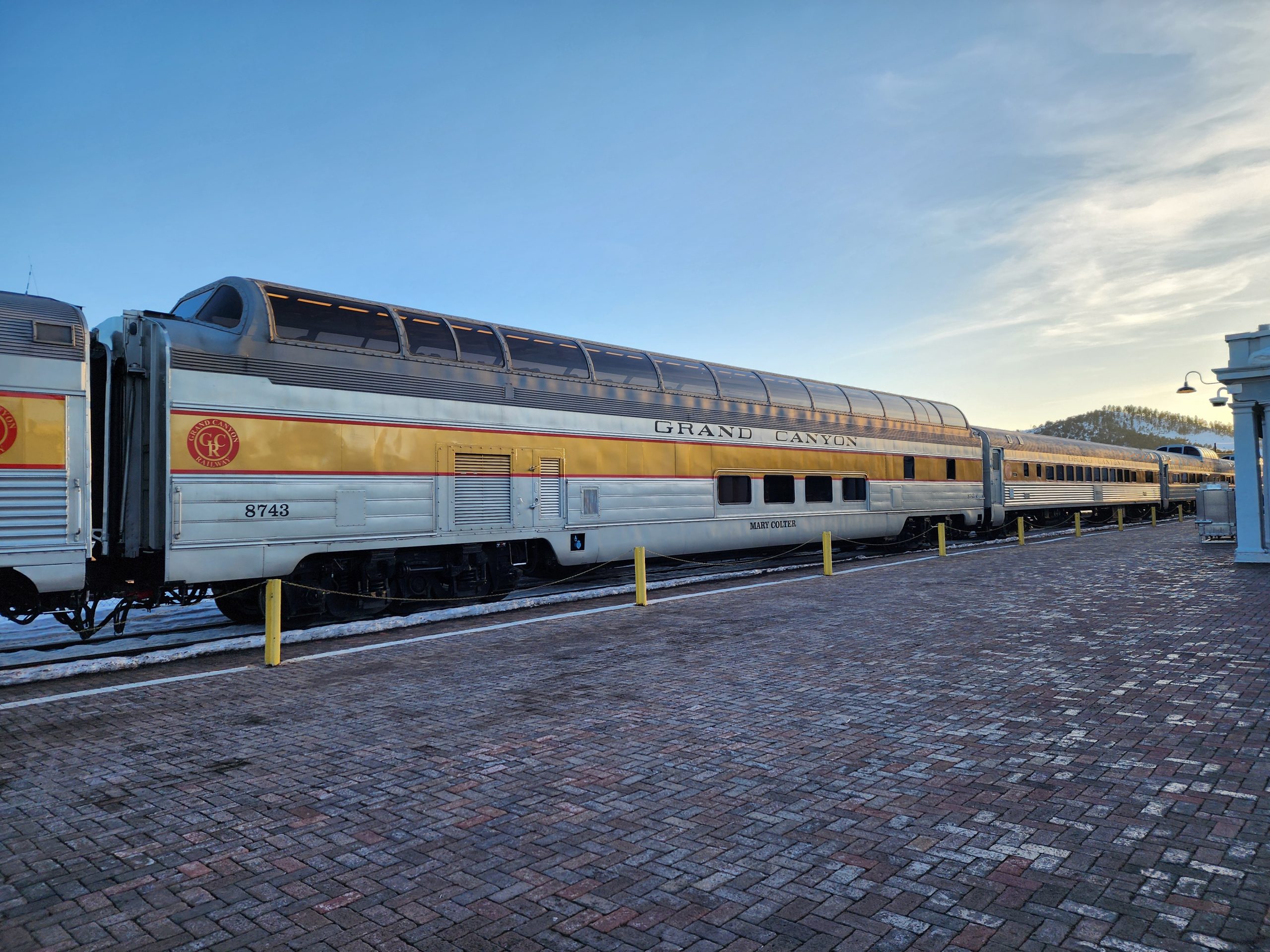
For the afternoon trip back to Williams, Sheryl chose another car in Grand Canyon Railway’s luxury class. The second-to-last car on the train was what the railway calls a Luxury Dome Car. This car, which is just as expensive as the rear parlor car, combines the lounge of the parlor car with a full-length observation dome. It’s the best of both worlds and in our opinion, the best car on the whole train.
ADVERTISEMENT
On Valentine’s Day, the Luxury Dome Car in service was the Mary Colter, which has its own story, from the Grand Canyon Railway:
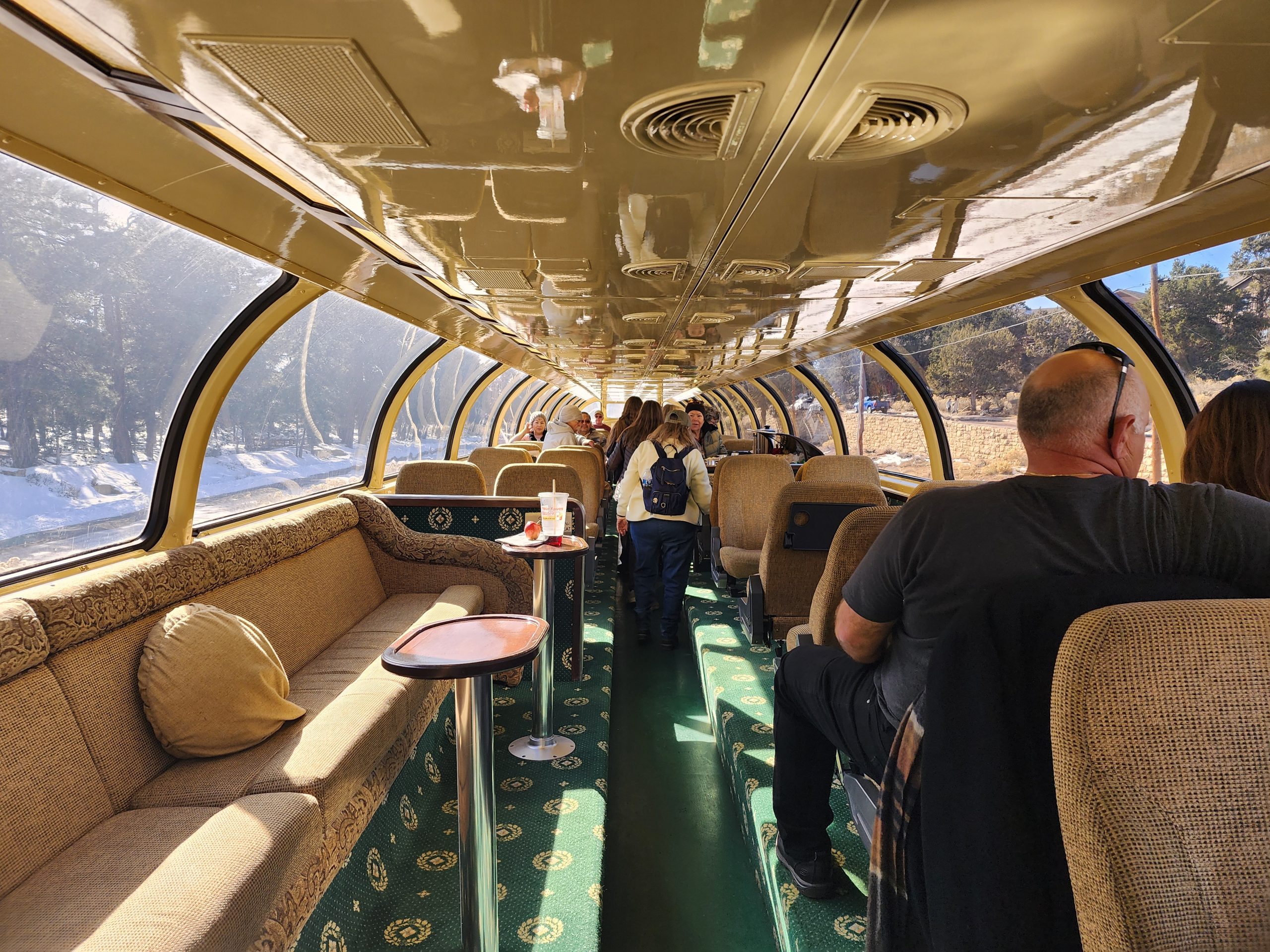
Grand Canyon Railway’s second full-length Luxury Dome, “Mary Colter,” entered service in April of 2017 after a year-long project to refurbish and modernize the passenger car. Built by the Budd Company in 1955, this car was originally named “River View” and served on Great Northern Railway’s Empire Builder Train between Chicago and Seattle. Eventually the car was purchased by Amtrak and was based in San Diego and later Chicago. In 2001 the car was purchased by Grand Luxe and renamed “Copper Canyon” for service on the American Orient Express until sold to Grand Canyon Railway in 2009. GCR renamed this car “Mary Colter” in honor of the Harvey Company’s chief architect, responsible for the design of many historic buildings at Grand Canyon National Park.
Mary Colter has two levels. The lower level has a bar and big plushy chairs to plop down into. Upstairs, you get seating that’s a lot less luxurious, but will be instantly forgiven because the full-length dome completely transforms the train ride. Before in the parlor car, you saw only what views the rectangular windows provided you. Now, there’s a whole lot less metal blocking your view. Even better was the fact that since seating was side-by-side, I got to cuddle Sheryl during the ride back to Williams. During the return trip, the Grand Canyon Railway brought out singers and even a silly Wild West robber show. Both enhanced the ride.
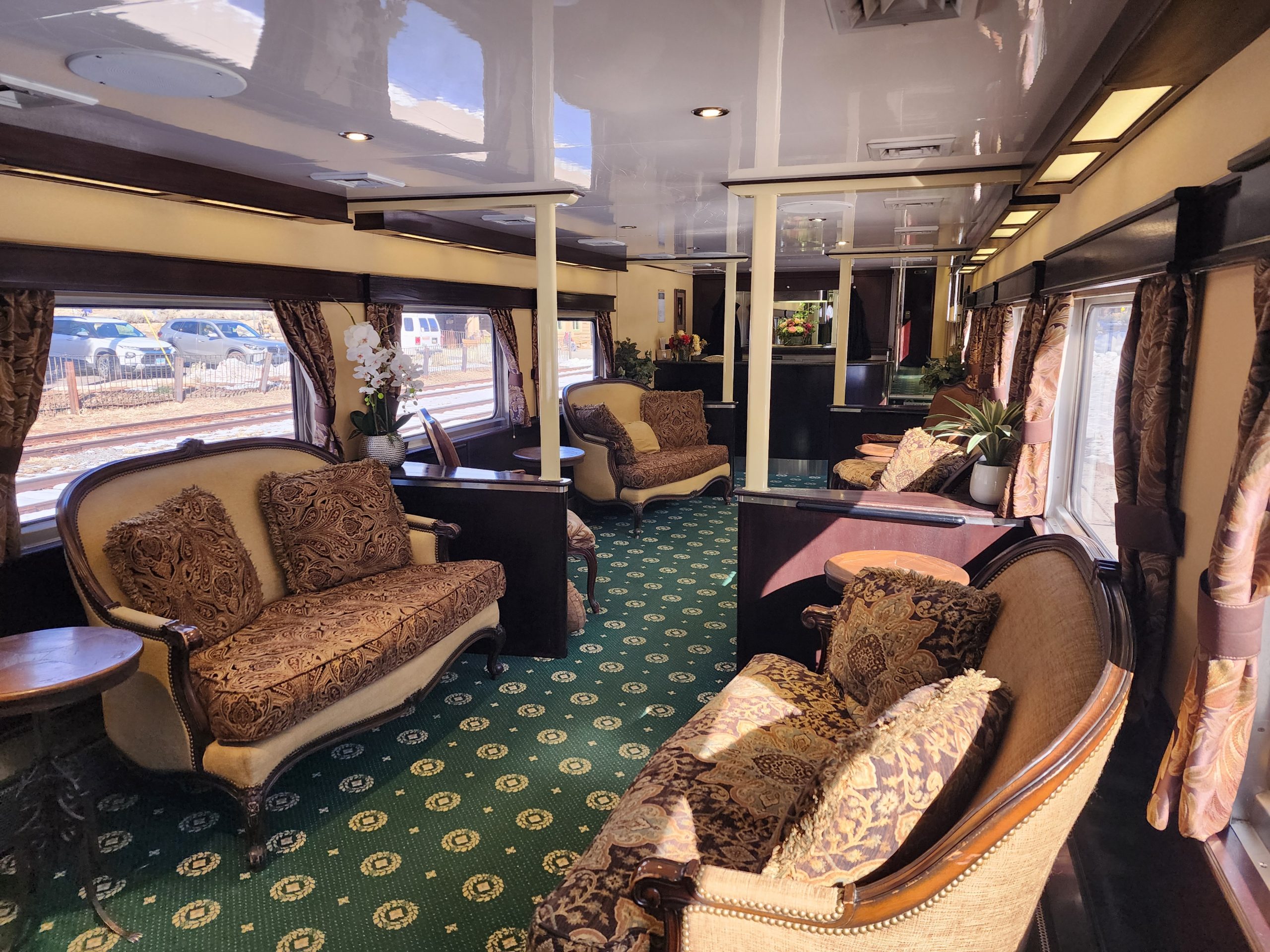
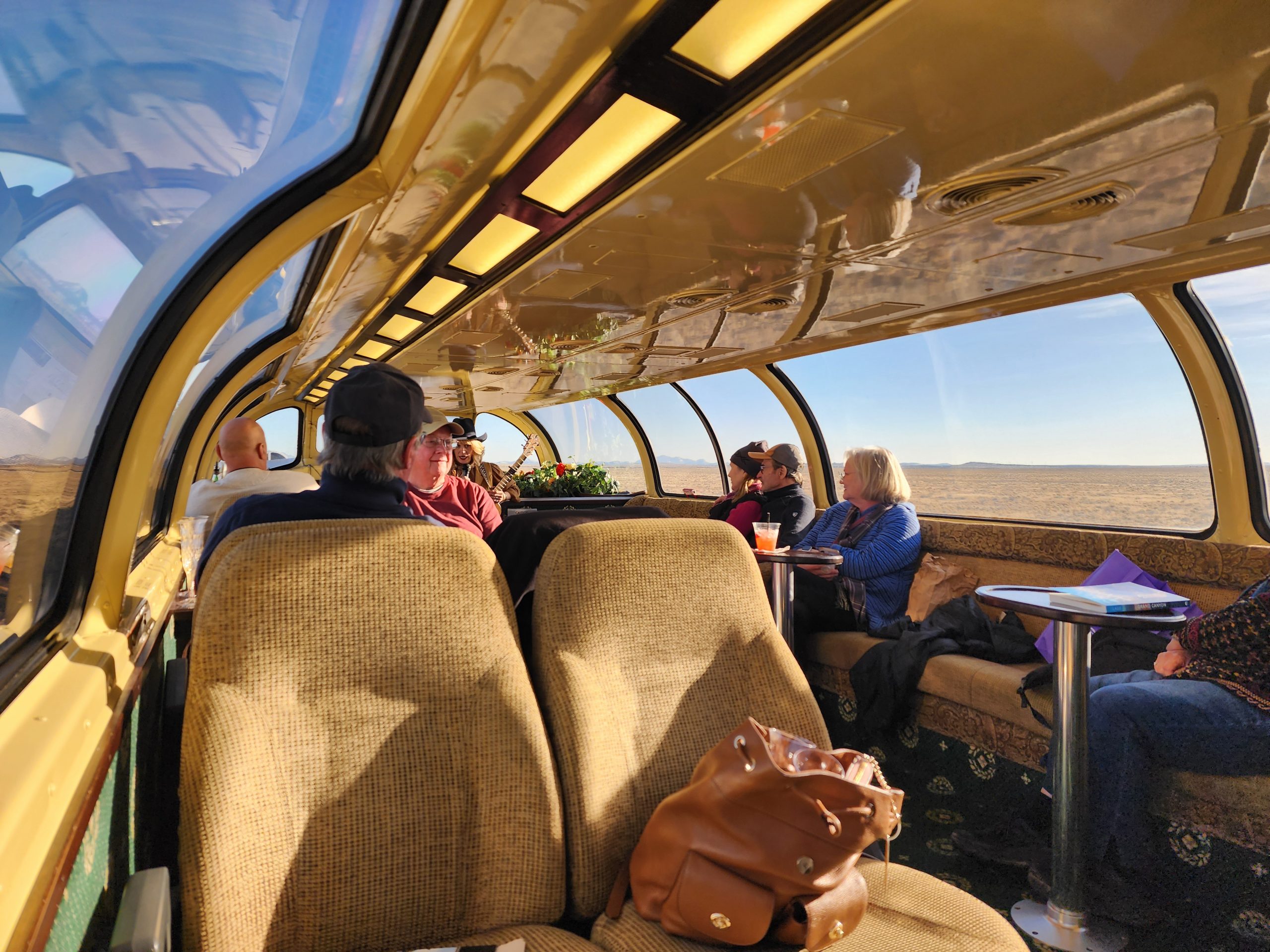
ADVERTISEMENT
The trip back to Williams took the same amount of time and the train ran at the same speeds. Yet, it was almost an entirely different experience than the parlor car before. In the elevated level of the dome car, you could see through the clear glass for miles, observe wildlife, and warm up to the person next to you. The ride in this car was even softer, making the ride back to Williams feel like you were booking a ticket on a cloud.
Of course, I also enjoyed having a direct view of the locomotives up front, which made me smile whenever the engineer let those prime movers wake up. I’m not sure I’ve ever been so relaxed in a moving vehicle before. I didn’t even want alcohol on the return trip. Seeing elk in a forest while holding Sheryl’s hand was more than enough. It was soothing to take a deep breath, slow down, and watch sparking snow fall from trees. I wanted the experience to last forever.
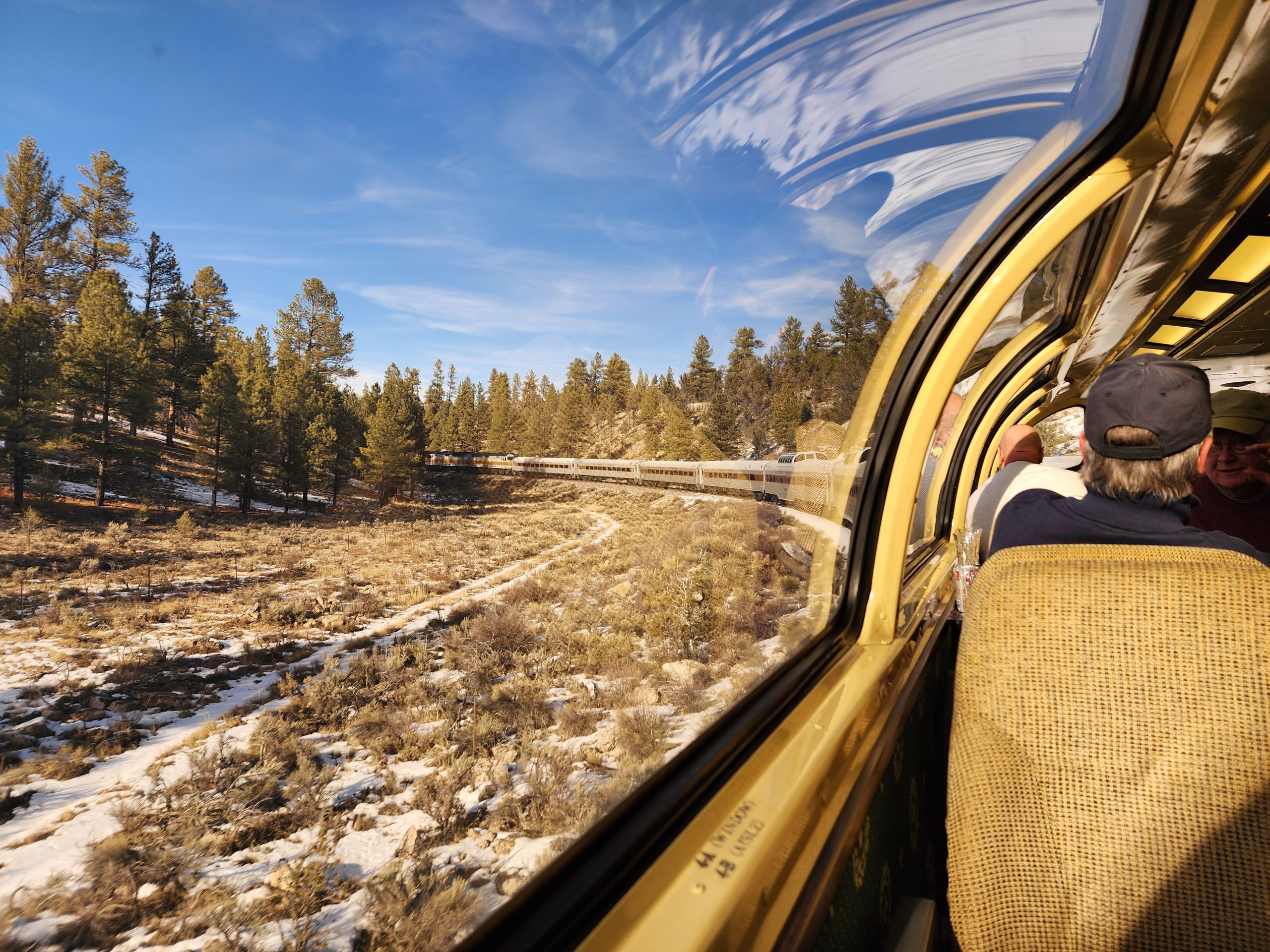
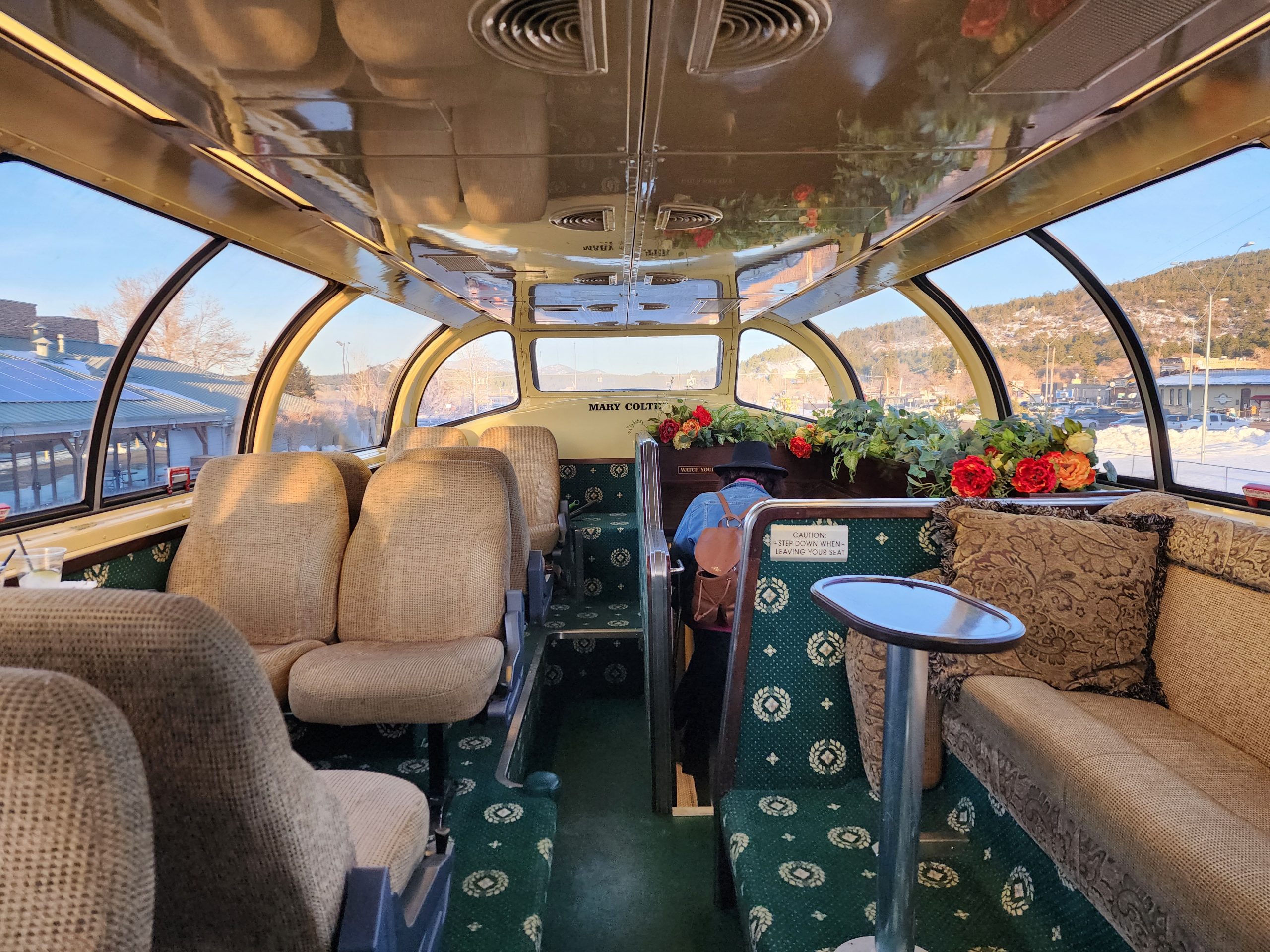
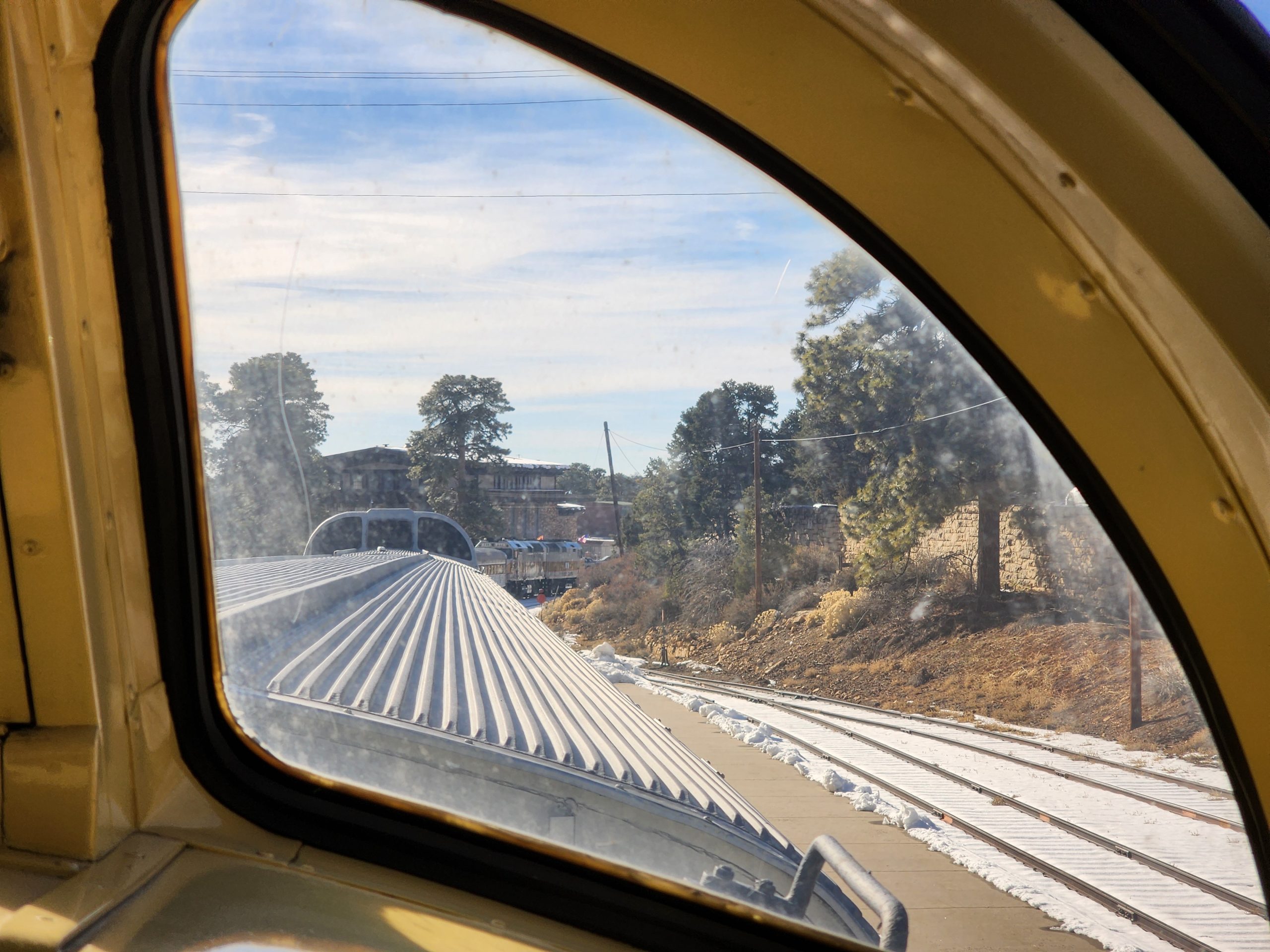
ADVERTISEMENT
Sheryl never told me how much she paid for the tickets, but the going rate right now is about $500 for two people to do the round trip in the luxury cars. That’s a ton of money to travel 64 miles, yet it was so awesome that I would readily do it again. The golden era of rail travel may be long dead. As of right now, it costs significantly more to travel across the country via Amtrak than it would in a car or a plane. Originally, we wanted to do our whole honeymoon trip via rail, but just getting to and from Williams in a private room on an Amtrak train would have cost more than what I’ve paid for many cars. So, we left the train to just the Grand Canyon portion of our trip.
I’m now firmly convinced that vintage rail, while not even close to an economical way to travel outside of a commute, is the most romantic way to travel. You don’t have to worry about city traffic, potholes, or getting crammed into an airplane seat so small that it should be illegal. There’s also so much history to take in long before you even get to your destination. You can enjoy alcohol, cuddle with your loved one, watch for wildlife, and even sleep. Let’s see you do that behind the wheel of a car. Wait, don’t accept that challenge.
The next time you’re planning a trip, see if there’s a possibility of taking a vintage train where you want to go. Heck, even some modern trains seem pretty awesome. Who knows, maybe you’ll find more enjoyment in going slow than dealing with the TSA or hitting the road.
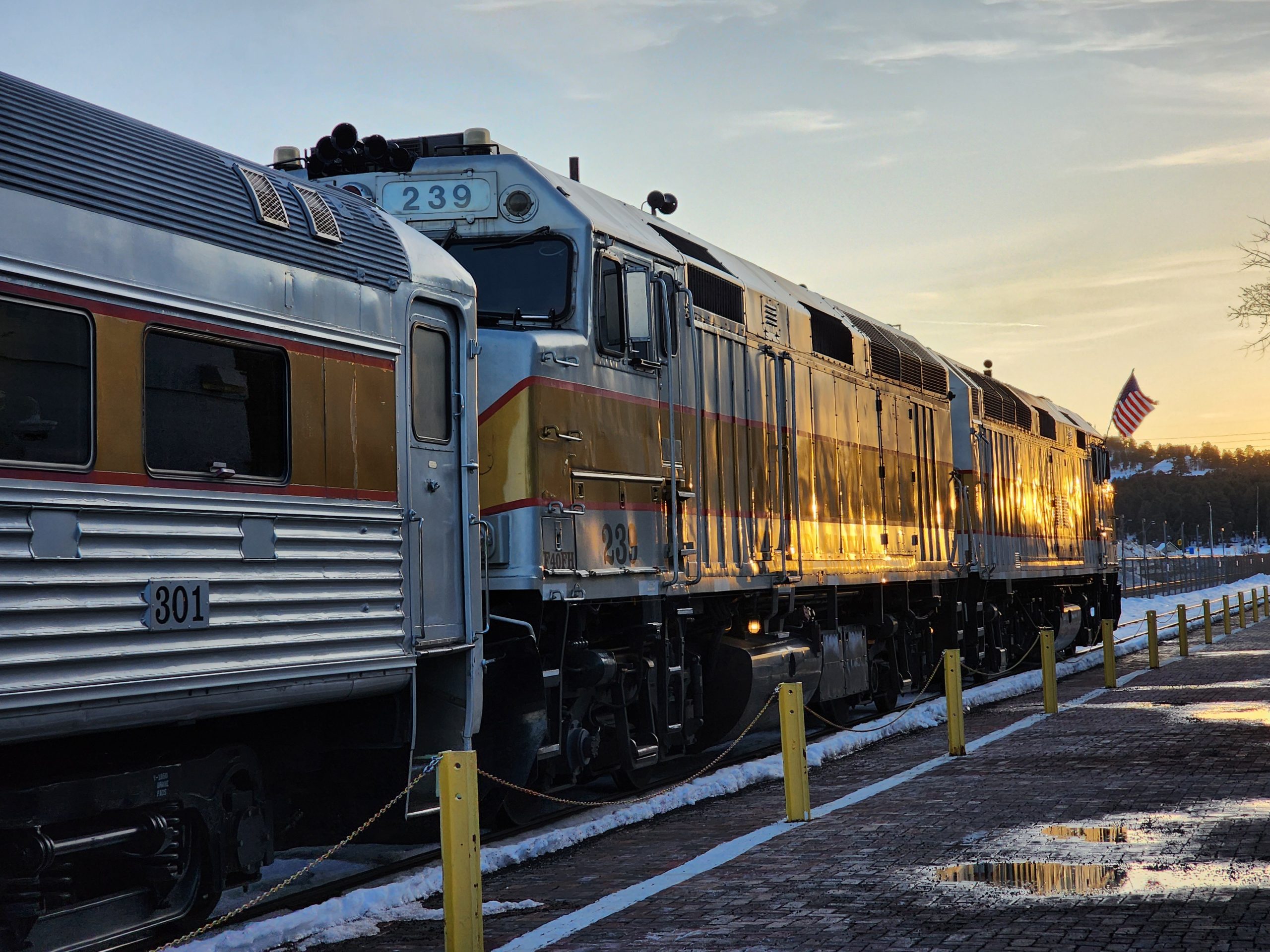
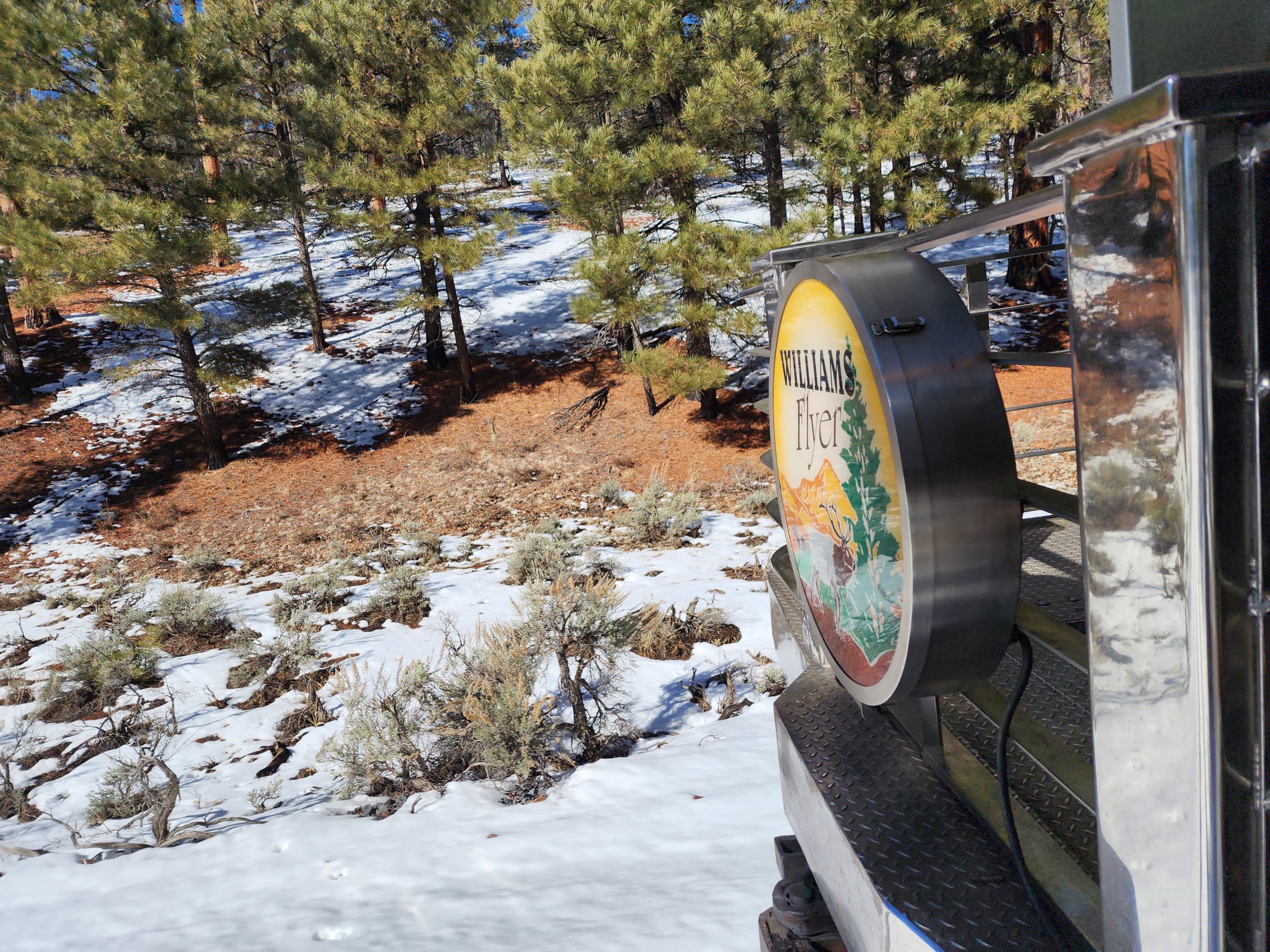
ADVERTISEMENT
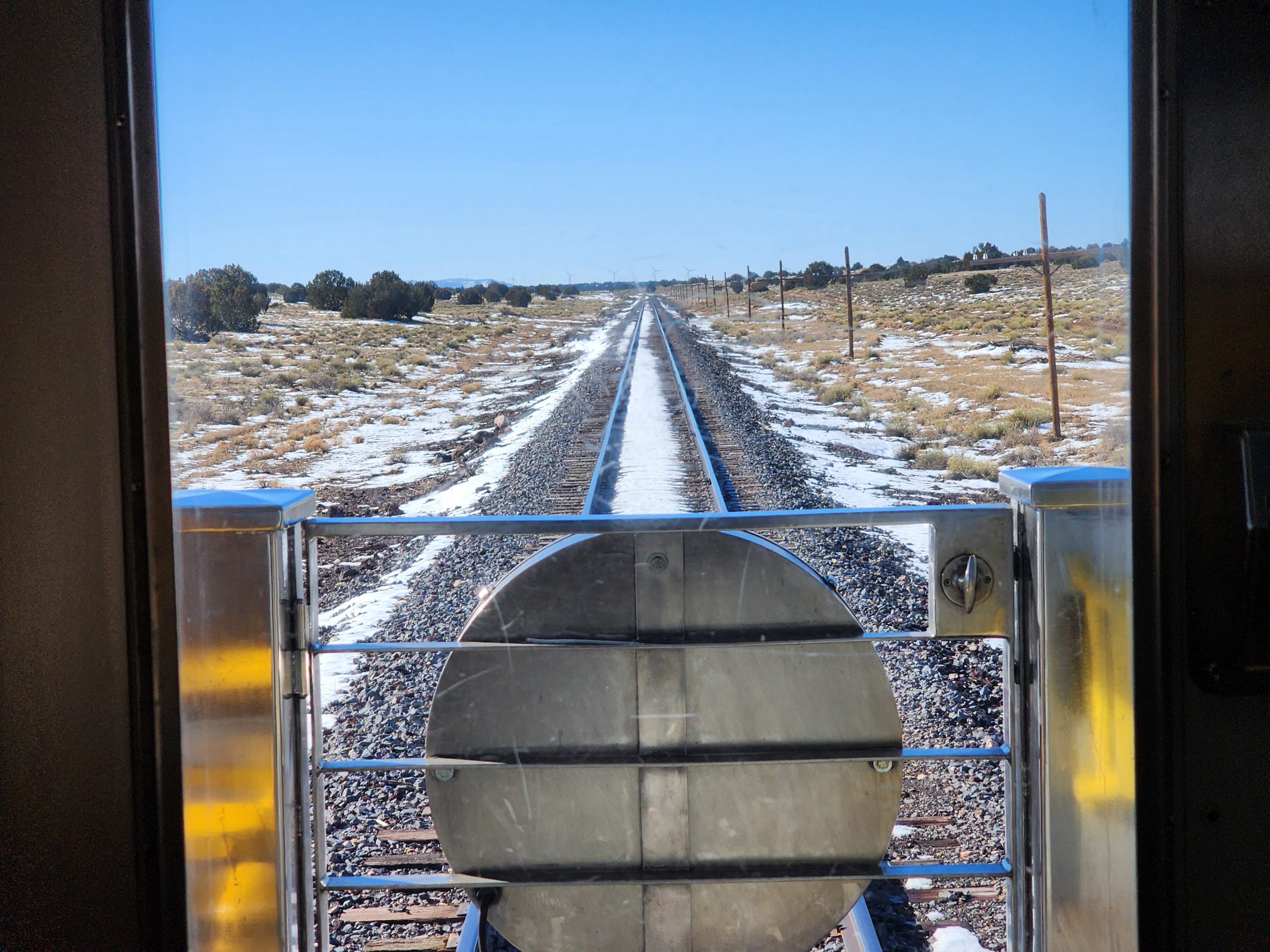
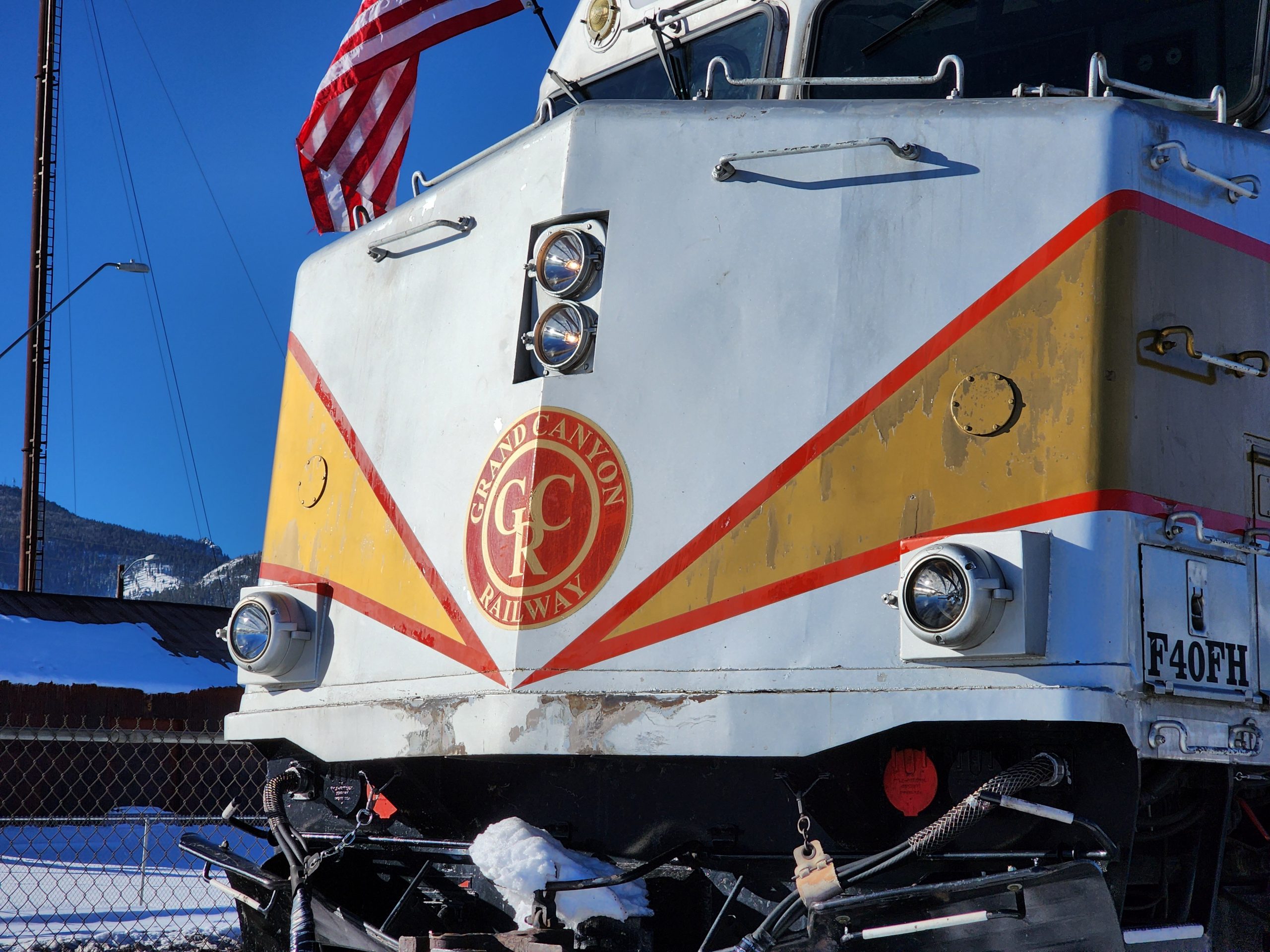
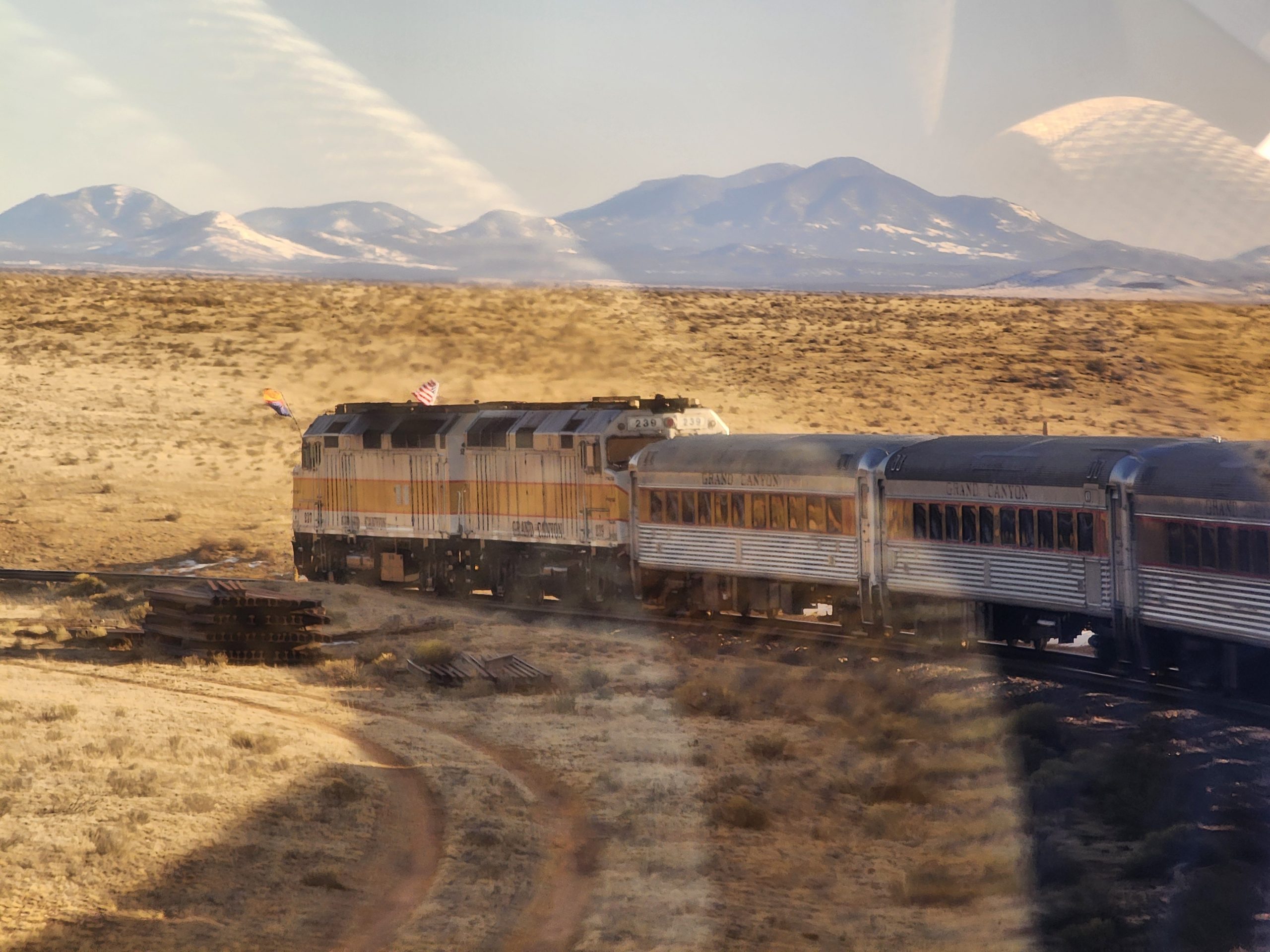
(Images: Author, unless otherwise noted.)

ADVERTISEMENT



